

8-Day South Korea Tour to Seoul, Busan and Jeju
Immerse yourself in the dynamic capital of Seoul, where ancient palaces meet modern skyscrapers. Explore the vibrant city of Busan and its stunning beaches, bustling markets, and serene temples. Discover the natural wonders of Jeju Island, known for its volcanic landscapes, beautiful beaches, and UNESCO-listed sites. This webpage is your ultimate tour to an unforgettable adventure, showcasing the cultural heritage, breathtaking scenery, and gastronomic delights of South Korea.
We can customize this trip by adding anything you're interested in and scheduling days to fit your pace. We would happily organize a unique theme or activities for birthdays, young children, anniversaries, etc.
- Best For: Slow Pacers and Couples
- Departure date: Up to you
- Sample Price: From US$3,200p/p, (2 per room)*
- Flights: SE Asia's included (international on request)
* The price is based on a private tour for 2 people.
Tour Highlights
Here are the fantastic attractions, the most must-do activities selected by Asia Highlights (AH Hand-Picked), and exclusive cultural experiences offered by Asia Highlights (Only With AH) included in this tour:
Step back in time and immerse yourself in the grandeur of Gyeongbokgung Palace .
Visit the charming bukchon hanok village filled with traditional houses from the joseon dynasty., spend a day to explore the beautiful landscapes and unique culture of jeju island ., visit the huinnyeoul culture village in busan, a charming coastal village with picturesque cliffs..
Discover real reviews of Highlights Travel Family 's best-rated service across trusted platforms.
Suggested Itinerary for Inspiration
The itinerary serves as a mere example of a personalized tour, designed exclusively for you. Your preferences will shape the authentic journey. We are fully prepared to craft an tailor-made tour that fulfills your desires.
Your private guide will be ready to meet and greet you at the arrival hall in Seoul. A comfortable private car with an experienced driver will transfer you directly to your hotel. Your guide will help you to check-in.
Begin your journey in Seoul with a visit to Gyeongbokgung Palace , the largest and most beautiful of the five palaces in the city. Learn about its history and enjoy the restored palace buildings.
Continue to Bukchon Hanok Village , a charming neighborhood filled with traditional houses from the Joseon dynasty. Take a stroll through its narrow alleys and immerse yourself in the atmosphere of ancient Korea.
End the day in Insadong, a neighborhood known for its traditional culture and arts scene. Explore the streets, indulge in Korean cuisine, and visit art galleries and shops.
Start the day by walking along the historic Seoul City Wall, also known as Hanyangdo Seong. Enjoy panoramic views of the city and soak in the rich heritage surrounding you.
Head to N Seoul Tower , an iconic landmark offering breathtaking cityscapes. Consider visiting in the evening for a stunning view of Seoul illuminated. Find tranquility at Bongeunsa Temple, located in the heart of the bustling city. Marvel at the Buddhist architecture and immerse yourself in the serenity it offers. Conclude the day with a shopping spree at Myeongdong Shopping Street, a vibrant district known for its fashion, beauty products, and local treats.
Visit the Cheomseongdae Observatory , an ancient structure from the Silla Kingdom representing the lunar calendar. Dive into the history and significance of this observatory.
Immerse yourself in the Buddhist culture at Bulguksa Temple , originally built for peace and prosperity. Explore its serene surroundings and delve into the cultural richness it embodies.
Continue to the Seokguram Grotto , a UNESCO World Heritage site. Marvel at the seated Buddha and appreciate the cultural significance preserved throughout the ages. Conclude the day by exploring the Daereungwon Tomb Complex, home to impressive burial mounds and the Cheonmachong Tomb. Experience the rich archaeological heritage that paints a vivid picture of ancient times.
Begin the day at Huinnyeoul Culture Village in Busan, a charming coastal village with picturesque cliffs. Take a leisurely stroll along the Jeoryeong Coastal Walk and explore the Huinnyeoul Coastal Tunnel for a unique seaside experience.
Ascend to Dalmaji Hill Park for breathtaking panoramic views of Busan and its azure sea. Experience the artistic ambiance reminiscent of Montmartre in France. Conclude the day by exploring more of Busan's attractions and its vibrant atmosphere.
Fly to Jeju and begin the day at Seongsan Ilchulbong , a natural wonder shaped by volcanic eruptions. Witness the spectacular view from the crater and embrace the awe-inspiring landscape. Spend the rest of the day exploring the beautiful attractions and unique culture of Jeju Island.
Start with a visit to Samseonghyeol , a sacred site believed to be the birthplace of three demigods. Explore the serene surroundings and connect with Jeju's captivating folklore.
Immerse yourself in the captivating heritage of Jeju at the Folklore & Natural Museum . Learn about the island's unique culture, history, and natural wonders. Venture to Yongduam Rock, a dragon-shaped rock formation along the coast. Enjoy the breathtaking views of the ocean and take a leisurely stroll along the nearby coastal area.
Indulge in Jeju's culinary delights at Black Pork Street , known for its delectable Jeju black pork. Discover the local gastronomic scene and savor the island's specialty dishes.
Our guide will help you transfer from your hotel to Jeju Airport for departure with independentcar/van and guide.
Design Your Ideal Trip with Our Travel Expert
Exceptional experiences can be added to brighten a honeymoon trip, a family vacation, a birthday, or satisfy personal interests.
Our Service Includes:
- Private transfers and English-speaking tour guide
- All guided sightseeing as detailed in the itinerary
- Hand-picked star-rating accommodations
- Breakfasts at hotels and lunches for every guided day
- Governmental taxes
Tour code: ah-sk-cx-3
Inquire now! Your 1:1 travel consultant will reply within 1 working day.
How would you travel.
Adults number (age ≥ 18 years old)
Children number
10-17 yrs old
3-9 yrs old
0-2 yrs old
What's your hotel choice?
When would you travel.
I am also available on:
Get Inspired with Some Popular Itineraries
At Asia Highlights, we create your kind of journey — your dates, your destinations, at your pace. You can have any trip tailor made for your travel.
More Travel Ideas and Inspiration
Sign up to our newsletter.
Be the first to receive exciting updates, exclusive promotions, and valuable travel tips from our team of experts.
Why Asia Highlights
Where can we take you today.
- Middle East
- African Safari
- Travel Agents
- Loyalty Program
- Privacy Policy
Address: Building 6, Chuangyi Business Park, 70 Qilidian Road, Guilin, Guangxi, 541004, China

- Travel and Accommodation
ASA Holidays - good or bad?
- Thread starter Human A
- Start date Sep 15, 2010
More options
Junior member.
- Sep 15, 2010
guys, any of you here been on tour with ASA Holidays? esp their tour to korea. good or bad, please tell me more!
Human A said: guys, any of you here been on tour with ASA Holidays? esp their tour to korea. good or bad, please tell me more! Click to expand...
kennylow1976
- Sep 23, 2010
hmm i am not sure.. i only been to tour with new shan travel if not i will usually go for free and easy de.. http://tour.newshan.com/PackageList.aspx?Country=KR&City=ALL i usually check wego.com to compare the tour packages n airfares if not you can check out the www.travelagents.com.sg/
- Jul 7, 2011
hi pple wad attracts me to asa is becos they usually include an "exclusive" in their tours. they acually include someting tat other agencies dun include, thus giving them an edge over competitors. Eg: 3 yrs back when i joined their korea package, they had a submarine ride. Their three gorges package include nite's stay at chongqing's hongyadong hotel (a unique hotel structure). their usa & canada package includes a gondola ride to mont tremblant. experience wif them is "so far" quite pleasant - experienced tour leads.
darklighter
Senior member.
snowbun why bother replying a thread from 2010..? BTW i just came back from korea with ASA last month, the submarine tour made every one seasick and there wasn't much marine life to see. the commentator was showing us volcanic rocks... ASA has good coverage of korea is all i can say. whether it's the standard of korea itself or our tour guide brought us to the lousier places, ultimately korea is not as glamourous as the media presents
- Jul 13, 2011
abt e submarine... hrmm., i muz say i was abit disappointed too... cos e water wasn't tat clear... hardly any fishes ard... it was more of an experience thou... tats e adventure of travelling - venturing new grounds, hike mountains, shopping trips, trying out new tings. althou new tings may not neccessarily be good... for the korea tour, the tour guide brot us to a pharmacy to buy sea-sick plasters. These dot plasters can be stuck behind e ears of sumone prone to sea-sickness or altitude-sickness, even motion sickness. I tink it werks, non of our tour mbrs felt unwell after e submarine ride.
i went with ASA to korea in mid april. service was gd. food and accomodation met my expectations. it's a quality trip. but the submarine tour was crap. well it's nt bcoz there's sth wrong with the itinenary or what. idk is it bcoz of japan's tsunami.but all i saw was cloudy water n lol a few fishes n some crappy corals tt are quite plain. i cant be bothered to take any pictures(while idk y other ppl r clicking away). it's totally diff from the pictures i saw at the submarine ticketing station. i went to search on youtube,the submarine tour videos posted were beautiful! clear blue waters with schools of fishes and colourful corals. n.... it was exactly the same yellow submarine. irony huh? perhaps ASA could hv done better by checking the sea conditions first before bringing the tour grp over. n i tink it's quite hard to get seasick bcoz it only submerge into the sea n the ferry we took to the submarine location was like those penguin ferrys to batam. oh ya n jeju wasn't as beautiful as the jeju i saw on tv. mayb coz we didn't go to the beautiful places in jeju. the sunrise peak was zzz. nt as beautiful as shown in pictures. the sakura was also zzz. dk y diff from those places in korean dramas. nt much scenery involved in the itinenary.scenery in Taiwan multiple times better.
- Jul 14, 2011
i tink it could be becos e submarine didnt go into deeper waters... i mean deeper waters = less ventured = more corals rite mb tats e agreement asa had wif the company... cheaper tat way... touch & go... they do not bother whether u have quality time or experience there anot.. as consumers, we can oni console ourselves tat "its an experience" my experience 3 decembers ago, the waters were unclear n rather chalky too... mb tats e quality of the water there... seriously, korea has been overly rated by some die-hard korean fans & drama serials... scenery, cuisine, spa, shopping, activities etc - noting to shout about. in fact, i won't consider goin there a second time
wah rly like tt ah. then i rather they spend the timing going to tt crappy submarine tour on shopping or free time instead. yea shopping wise= lots of fashionable clothes. but prices are like our bugis street or more exp. quality wise better. hmm i will consider going korea 2nd time. but most prob for its winter and free n easy instead. though language is a huge barrier. hahaha cuisine wise not bad. i love their bbq pork n steamboat. yummy =O
snowbun said: seriously, korea has been overly rated by some die-hard korean fans & drama serials... scenery, cuisine, spa, shopping, activities etc - noting to shout about. in fact, i won't consider goin there a second time Click to expand...
snowbun said: food wise is good - but perhaps i'm not really a meat eater... so after so many days of bbq pork.. bbq chicken... i'm really quite sick of it... Click to expand...
iminalost.... u make fun of me huh... perhaps we r quite spoilt cos we r exposed to so many varieties of food in sin... so day in, day out eat bbq meat wif kimchis can really bore me... on e other hand, cos we r on a travel package... e kind food served can be really limited.... ve seen korean tv programmes, where they serve so many types of shellfish (bbq style, sashimi style)etc
- Jul 15, 2011
lol coz ur display pic has pandas. agree with what u've said!
hypertrophy
Master member.
- Jul 16, 2011
Thought I was the only one who don't really like korea. I've been to Japan and Australia and its unforgettable.. Korea was so-so, I went to jeju as well but nothing too memorable except that the sweet potato was selling for 5bucks each. I love their sweet potato ice cream though
- Jul 18, 2011
yah.. tot i was e oni one who didnt find korea trip "memorable"... not tat e trip is extremely bad, juz tat i wun consider goin there again lor.. (unless there's really no where else to go)
- Aug 6, 2011
Richard Yeo
- Jun 4, 2017
Fully agreed . ASA tours are lousy. A lot of hidden costs. Bad tour guides. Shady hotels. Etc.
Supremacy Member
- Jun 9, 2017
I have travelled a few times with ASA. All experiences were good.
16 Days South Korea & Japan In-depth Discovery Tour with Stunning Experiences
- Accommodation
In-depth Discovery about Two Countries: South Korea & Japan
Why South Korea and Japan? The two fascinating Asian countries offer a unique blend of ancient traditions and modern marvels. Whether you're a history buff, a foodie, or a pop culture enthusiast (K-pop, K-dramas, and Korean beauty products, or anime, manga), both countries have something to offer.
Our 16 days South Korea and Japan tour takes you on an immersive journey through South Korea and Japan, exploring their rich history, stunning nature, delicious cuisine, and vibrant culture .
In South Korea , visit Seoul, Seoul, Gyeongju, Busan, and you'll discover iconic palaces, temples, and traditional hanok villages. In Japan , start your adventure in Osaka, the gateway city. Explore Hiroshima's poignant history, Nara's ancient temples, Uji's renowned tea plantations, Kyoto's cultural treasures, Tokyo's bustling metropolis, and the majestic Mount Fuji.
From the ancient temples and shrines to the modern cities and natural wonders, South Korea and Japan offer an unforgettable experience for travelers of all ages. Book your tour today and discover the enchanting duo!
Itinerary at a Glance
Seoul (2.5 Days)
Gyeongbokgung Palace, Bukchon Hanok Village, Jogyesa Temple, Insadong Art and Antique Street, Gwangjang Food Market, Presidential Blue House (Outside View)
Gyeongju (1.5 Days)
KTX train from Seoul to Gyeongju, Gyeongju National Museum, Daereungwon Tomb Complex, Donggung Palace and Wolji Pond, Cheomseongdae Observatory, Bulguksa Temple, Seokguram Grotto, Gyeongju Folk Craft Village
Busan (2.5 Days)
Haedong Yonggungsa Temple, Gamcheon Culture Village, Jagalchi Fish Market, Yongdusan Park
Osaka (1.5 Days)
Osaka Castle Park, Kamigata Ukiyoe Museum, Shinsaibashi-suji Shopping Street, Dotombori District, Namba Yasaka Shrine, Shinsekai & Tsutenkaku Tower (Appearance)
Hiroshima (1 Day)
Hiroshima Peace Memorial Park (Atomic Bomb Dome, Hiroshima Peace Memorial Museum), Itsukushima Shrine
Japan Nara (0.5 Day)
Todaiji Temple, Nara Park, Kasuga Taisha
Uji (0.5 Day)
Uji Matcha street, Byodoin Temple, Uji River (Uji Bridge)
Kyoto (2 Days)
Fushimi Inari Taisha Shrine, Kiyomizudera Temple, Ninenzaka & Sannenzaka, Yasaka Shrine, Gion, Kinkakuji Temple, Nijo Castle, Sagano Scenic Railway, Arashiyama Bamboo Grove, Tenryuji Temple, Togetsukyo Bridge
Mt. Fuji & Hakone (1 Day)
View Mt. Fuji, Lake Kawaguchi, Owakudani, Lake Ashi (Hakone Pirate Ship)
Tokyo (3 Days)
Meiji Jingu Shrine (Meiji Shrine), Shibuya Crossing, Senso-ji Temple (Asakusa Kannon), Tokyo Skytree (Distant view), Akihabara, Tsukiji Outer Market (Tsukiji Fish Market)
Itinerary Day by Day
안녕하세요! Welcome to Seoul , the capital of South Korea! Upon your arrival at Seoul Incheon International Airport, your driver will meet you at the exit and escort you to the hotel. Enjoy a restful night at your hotel and prepare to explore Seoul the following day.
Your adventure begins in Seoul, a sprawling metropolis located in the Han River basin. It's a city of contrasts, where ancient palaces, towering skyscrapers, and bustling markets coexist harmoniously. If you arrive early, explore this modern Asian metropolis at your own pace and discover how ancient traditions blend seamlessly with modernity in one of Asia's great cities.
During your experience in Seoul, you will have the opportunity to capture its essence: (1) Discover centuries-old palaces like Gyeongbokgung and Changdeokgung, immerse yourself in traditional Korean culture at Bukchon Hanok Village, or explore the serene beauty of temples like Jogyesa. (2) Experience Seoul's futuristic side with towering skyscrapers, cutting-edge technology, and trendy neighborhoods like Gangnam and Hongdae. (3) Indulge in a culinary adventure with delicious Korean dishes like barbecue, kimchi, and bibimbap.
In the morning, your guide will pick you up from your hotel. Today is a highlight of your Seoul trip, featuring amazing attractions and experiences. You'll explore the grand palace, the traditional Hanok Village, and immerse yourself in the vibrant local life and culture. Plus, you'll have the chance to try typical Korean snacks.
Your first stop is the Presidential Blue House (Cheongwadae), a symbol of South Korea's political power. Take in the distinctive blue roof and modern architecture from the outside .
Next, walk to Gyeongbokgung Palace , the largest and best-preserved palace in Korea, which served as the main palace of the Joseon Dynasty. Built in 1395 by King Taejo Lee Seong-gye, this palace witnessed the rise and fall of the dynasty. Its layout is meticulous, and its architectural style is unique, representing the pinnacle of Korean architectural art. ( Optional: Hanbok Rental Experience - Dress in a traditional hanbok for a journey back in time to the Joseon Dynasty. Rental fees apply on-site.) Follow the route suggested by your guide, visit Gwanghwamun, the most iconic gate, and admire the palace's architecture. Appreciate Geunjeongjeon, the heart of Gyeongbokgung Palace and symbol of the highest authority of the Joseon Dynasty. Proceed to Sajeongjeon, where grand ceremonies were held and foreign envoys were received. Explore Gyotaejeon to see the queen's living quarters. Enjoy a leisurely stroll to Hyangwonjeong, a picturesque pavilion situated on an artificial lake, offering a splendid view of the palace. (Please note: If time allows, you can take a photo with the changing of the royal guard ceremony at Gwanghwamun for a unique, historical experience. The ceremony takes place at 10:00 and 14:00, except on Tuesdays when Gyeongbokgung Palace is closed. It typically lasts about 20 minutes.)
After exploring the grand palace, let's head to enjoy the traditional Korean houses at Bukchon Hanok Village . This village is renowned for its well-preserved traditional Korean houses , known as “hanok”. Originally a residential area for the nobility and high-ranking officials of the Joseon Dynasty, Bukchon Hanok Village is characterized by its abundance of hanok. These houses feature curved roofs, wooden frames, and traditional Korean interior design. Many of the hanok have been repurposed into cultural centers, tea houses, and guesthouses, providing visitors with an opportunity to experience traditional Korean living firsthand.
Escape from the hustle and bustle, and you’ll take your time to visit Jogyesa Temple , founded in 1395. It serves as the headquarters of the Jogye Order of Korean Buddhism. At this serene and peaceful temple, you will gain a deeper understanding of Korean Buddhism and culture.
Later, get to the Insadong Art and Antique Street , which is renowned for its vibrant cultural scene and traditional Korean crafts. You’ll browse a vast array of traditional Korean art, including paintings, calligraphy, ceramics, and sculptures. And you can also catch traditional Korean performances, including traditional dance, music often held in the streets.
After that, let's dive into the bustling Gwangjang Food Market , a culinary paradise where you can savor a variety of delicious Korean street food. Indulge in popular dishes like bindaetteok (mung bean pancakes), tteokbokki (spicy rice cakes), kimbap (seaweed rice rolls), and mayak gimbap (mini rice rolls), as well as Kimchi Jeon.
After the tour, be transferred back to your hotel in Seoul.
On this day, you will travel from Seoul to Gyeongju by KTX . The train journey takes about 2-2.5 hours. It is a comfortable and efficient way to travel between these two cities. Along the way, you’ll have the opportunity to admire the beautiful Korean countryside as the train passes through various landscapes, including mountains, fields, and villages.
Upon arriving in Gyeongju, your local guide will meet you at Gyeongju Station and accompany you on a tour of the city. Gyeongju , situated in southeastern South Korea, served as the ancient capital of the Silla Kingdom and is a UNESCO World Heritage Site . As a cultural hub, you'll have the opportunity to explore the ruins of ancient palaces, temples, and tombs, immersing yourself in the fascinating history of this once-powerful kingdom.
This afternoon, you'll delve into the rich history and culture of the Silla Dynasty at Gyeongju National Museum . The museum houses a vast collection of artifacts from the Silla Dynasty, one of the Three Kingdoms of Korea. Marvel at the exquisite gold crowns, considered masterpieces of Silla craftsmanship. Admire the intricate details of gilt-bronze artifacts, including statues, bells, and mirrors. And appreciate the beauty of ceramic artifacts such as pottery, tiles, and celadon ware.
Afterward, journey through history at the Daereungwon Tomb Complex , a UNESCO World Heritage Site also known as Tumuli Park. This ancient burial ground of the Silla royal family offers a unique glimpse into the lives and customs of this bygone era. Take your time exploring the various tombs, marveling at the intricate details of their architecture and artifacts. Don't miss Cheonmachong Tomb , renowned for the discovery of the "Heavenly Horse" mural, a stunning piece of Silla art depicting a majestic horse. If time permits, extend your exploration to Gold Crown Tomb , where you'll witness the opulence of the Silla royal family through its gold crown. Finally, venture into the numerous stone chambers , each with its own distinct architecture and artifacts.
Later, walk to Gyeongju Cheomseongdae Observatory , a unique historical landmark located in Gyeongju. Built during the reign of Queen Seondeok (r.632-647), Cheomseongdae is believed to be the oldest astronomical observatory in East Asia. The observatory takes the form of a cylinder, reaching approximately 9 meters in height. It consists of 365 stones, symbolizing the number of days in a year. Marvel at the tower and get insight into the scientific advancements of the Silla Dynasty.
An Amazing Night Tour for This Day:
When the sun goes down, you'll take a trip to Donggung Palace and Wolji Pond , immersing yourself in their tranquil and serene atmosphere. Explore Donggung Palace, the secondary palace built for the crown prince of the Silla Dynasty. Offering a more private and relaxed environment than the main royal palace, it served as a place of leisure and entertainment for the royal family. Stroll to Wolji Pond, also known as Anapji, an artificial pond constructed as a recreational area for the Silla royal court. Adorned with beautiful pavilions, walkways, and islands, it creates a serene and picturesque setting. Experience the magic as these attractions are illuminated at night.
Afterwards, enjoy a walk to Woljeonggyo Bridge , a beautifully restored wooden bridge spanning the Nakdong River in Gyeongju. Stroll across the bridge and admire the breathtaking views of the Nakdong River and the surrounding landscape.
After the tour, be escorted back to your hotel in Gyeongju.
This morning, you'll have an unforgettable UNESCO World Heritage tour. Our first stop will be Bulguksa Temple , a UNESCO World Heritage site and one of the most famous temples in South Korea. The picturesque temple complex is nestled on the slopes of Mount Toham and offers a serene environment to explore. Admire its exquisite architecture, intricate carvings, and serene atmosphere, offering a captivating glimpse into the Buddhist heritage of the Silla Dynasty. Explore the temple's highlights, including Dabeoreum Gate, Daeungjeon Hall (home to a large Buddha statue), Seokga Pagoda (a symbol of the temple), and Gyeongunjeon Hall.
From Bulguksa, venture to the nearby Seokguram Grotto , a UNESCO World Heritage site nestled on Namsan Mountain in Gyeongju. Marvel at the Giant Buddha Statue, the centerpiece of the grotto, a massive Buddha intricately carved from a single granite rock, gazing out at the East Sea. Explore the grotto's other numerous sculptures, depicting various Buddhist deities and figures. Finally, immerse yourself in the breathtaking panoramic views of the surrounding landscape. The combination of nature’s beauty and human craftsmanship makes this site truly special.
Later, drive to Gyeongju Folk Craft Village , an open-air museum showcasing traditional Korean crafts and lifestyles. Explore various types of traditional Korean houses, and witness skilled artisans demonstrating traditional crafts like pottery, weaving, woodworking, and calligraphy.
After the tour, you will be transferred to Busan (about 1-hour drive). Busan, South Korea's second-largest city, is a vibrant coastal metropolis known for its stunning beaches, delicious seafood, and rich cultural heritage. Upon arrival in Busan, check into the hotel and enjoy a good rest.
After breakfast, the local guide and driver will pick you up at your hotel. Start your day with a visit to Haedong Yonggungsa Temple , established in 1376 during the Goryeo Dynasty. Unlike most Korean temples nestled in mountains, this temple is built on a cliff overlooking the sea, offering stunning panoramic views and a serene atmosphere. Admire the temple's intricate architecture, which blends traditional Korean design elements with modern influences. Look for the twelve zodiac signs carved into the stone steps leading to the temple. Admire the main hall, which houses a large Buddha statue and offers a serene space for meditation. Visit the Dragon King Hall, dedicated to the mythical sea dragon, and pray for good fortune. Walk across the sky bridge that connects the temple to a small island, offering panoramic views of the ocean.
After that, head to Gamcheon Culture Village , often referred to as the 'Korean Santorini'. The village is renowned for its brightly colored houses, creating a visually stunning and Instagram-worthy backdrop. Wander through the narrow alleyways and admire the beautiful murals and art installations. Walk to the famous statue of The Little Prince standing atop a hill, offering panoramic views of the village. If you'd like, enjoy a cup of coffee or tea at one of the many rooftop cafés with stunning views of the village.
Later, explore Jagalchi Fish Market and Gukje Market, the largest seafood market in South Korea. Here, you can find fresh seafood and try various seafood dishes. Gukje Market is a bustling traditional market where you can find everything from clothes to souvenirs.
In the late afternoon, visit Yongdusan Park located in the heart of Busan. The highlight of visiting Yongdusan Park is undoubtedly the breathtaking views of Busan from the top of Busan Tower. Enjoy sweeping vistas of the city, the harbor, and the nearby islands.
After the tour, be escorted back to the hotel in Busan.
Optional Evening Travel Ideas:
If your energy permits, you can take an optional 3-hour night tour that showcases the city's dazzling nocturnal beauty. Begin your journey at the panoramic lookout on Mount Hwangryeong , where you can witness the city lights twinkling below like a constellation of stars.
Descent to Gwangalli Beach , a crescent-shaped stretch of sand that transforms into a mesmerizing spectacle after dark. Stroll along the promenade, marvel at the Gwangan Bridge illuminated in a dazzling array of colors, and immerse yourself in the vibrant atmosphere. After that, visit the Busan Cinema Center , a striking architectural marvel that hosts captivating light displays and screenings.
On this day, you have the freedom to explore this enchanting city at your own pace. Immerse yourself in the local culture with a leisurely city walk, or take an optional half-day cooking class to uncover the secrets of Korean cuisine. For a culinary adventure, seek out a renowned restaurant offering exquisite fine dining experiences. Or, indulge in a shopping spree, searching for unique and exotic souvenirs to commemorate your journey.
Note: If you have any specific preferences for today's tour, please feel free to let us know. We can customize the itinerary based on your interests.
On this day, you will be transferred to the airport in Busan for a flight to Osaka (about 1.5 hours).
Welcome to Japan! Upon your arrival at Osaka's Kansai International Airport , our representative will greet you with a sign bearing your name right at the arrivals gate. Then he will transfer you to your carefully selected hotel in Osaka. Check into your hotel and take some time to settle in and refresh. The rest of today is free for you to explore the local surroundings at your own pace.
Osaka, as Japan's third-largest city and a major economic hub, is renowned for its rich history, diverse cuisine, unique culture, and strong economic power. The city exudes a distinct sense of humor and an open, warm personality, making it exceptionally vibrant and colorful compared to other cities. Across its vast concrete expanse, dazzling neon lights and brightly colored storefronts illuminate the lively nightlife and irresistible culinary scenes. Known as the "nation's kitchen," Osaka is the birthplace of many Japanese culinary delights.
Free Time Ideas:
You can explore the Umeda district on your own, visiting the Umeda Sky Building for panoramic views of the city from its Floating Garden Observatory. As the sun sets, the city lights up, providing spectacular views and a perfect backdrop for your first night in Japan.
Start your day at Osaka Castle Park , one of Japan’s most famous landmarks and a symbol of Osaka’s historical grandeur. Originally built in 1583 by Toyotomi Hideyoshi, a powerful daimyo who aimed to unify Japan, it was the largest castle of its time. After multiple renovations and reconstructions, today's Osaka Castle has been transformed into an open park, covering a total area of 105.6 hectares, making it a must-visit attraction.
Walking into the scenic area of Osaka Castle, you'll be amazed by the massive scale and precision of the moats, gates, and stone walls. The largest stone slab is 11 meters wide, and many stones are inscribed with the crests of the 64 daimyō (feudal lords) tasked with the castle’s construction back in 1620. The most breathtaking feature is the Main Tower (Tenshukaku) of Osaka Castle, which stands tall against the sky at the center of the extensive castle grounds. The castle tower's interior is a museum showcasing artifacts related to Toyotomi Hideyoshi and the castle's history. The observation deck on the 8th floor offers a panoramic view of Osaka Castle Park and the Osaka Plain. Take some time to stroll through the Nishinomaru Garden , which offers a picturesque setting with over 600 cherry trees and beautiful views of the castle tower from below. This is especially enchanting during the cherry blossom season, which usually occurs in late March and/or early April.
Next, visit the Kamigata Ukiyoe Museum located in the Namba district, offering a fascinating glimpse into the traditional Japanese art form of ukiyo-e. Ukiyo-e is a woodblock print art form that originated during Japan's Edo period (17th to 19th centuries). The term ukiyo-e means "pictures of the floating world," with "ukiyo" deriving from the Buddhist metaphor for the transient pleasures of the world. This museum is the only one in the world that features a permanent exhibition of Kamigata Ukiyoe. During the Edo period, the Osaka and Kyoto areas were commonly referred to as Kamigata. Kamigata ukiyo-e originated in this region and is distinctive for its realistic portrayals of kabuki actors, depicting them as they truly appeared without excessive beautification or embellishment.
In the afternoon, you will experience the unique charm of the city through a street food and shopping tour. Enjoy shopping at Shinsaibashi-suji Shopping Street , Osaka's busiest shopping arcade. Then, head to the lively district of Dotonbori, where waterways are lined with luminous advertisements and signs. It's especially glitzy during the holiday season, with decorations strung across the bridges. Full of fantastic restaurants, clubs, and karaoke bars, it's the city's go-to area for entertainment. Take a photo at the iconic Glico Man sign. Try takoyaki, ball-shaped octopus bites, kushikatsu (Japanese deep-fried skewered meat and vegetables), and okonomiyaki, a savory Japanese pancake topped with whatever you like.
Continue to Namba Yasaka Shrine . This unique Shinto shrine features a striking, vividly depicted giant lion head with bright eyes and fierce fangs. This unusual architectural feature is believed to swallow evil spirits and bring good luck. Even in Japan, where shrines are abundant, this distinctive design stands out as truly unique, making it a memorable spot for photos.
Conclude your day in the Shinsekai (New World), an old neighborhood known for its nostalgic atmosphere reminiscent of the Showa era. Tsutenkaku Tower is the iconic landmark of this district. It was inspired by cities like Paris and New York. From a modern perspective, this 100-meter-tall steel tower may not seem particularly high, yet it holds a significant place in local history as a symbol of progress and innovation. Visiting Shinsekai is like stepping back in time, offering both the charm of yesteryears and the excitement of modern urban culture.
Stay overnight in Osaka.
Today, you will head to Hiroshima, a modern city featuring broad, tree-lined boulevards, meandering rivers, and a bustling city center. While Hiroshima is perhaps best known for being the target of an atomic bomb attack near the end of World War II, the city is not defined by this tragic history. Instead, it has continually advocated for peace and understanding.
The distance from Osaka to Hiroshima is about 300 kilometers. Traveling by Shinkansen (Bullet Train) takes around 1.5 to 2 hours. Driving takes longer, about 4 to 5 hours. To save time and money, we will only arrange a guide to accompany you as you travel back and forth between Osaka and Hiroshima by Shinkansen, with sightseeing in the city areas using public transportation.
Start your day early as your guide picks you up from your hotel in Osaka. The guide will assist you to the train station to board the Shinkansen (bullet train) and accompany you to Hiroshima.
Upon arrival in Hiroshima, proceed to the Hiroshima Peace Memorial Park . The park is dedicated to the victims of the atomic bomb in 1945 and is a poignant reminder of the costs of war. Hiroshima Peace Memorial Park has numerous monuments and the iconic Atomic Bomb Dome.
The Atomic Bomb Dome , officially known as the Hiroshima Peace Memorial, is one of the most iconic structures in the Hiroshima Peace Memorial Park. Originally serving as the Hiroshima Prefectural Industrial Promotion Hall, it is known for its distinctive European-style dome. On August 6, 1945, it was struck by an atomic bomb, and the dome was directly beneath the bomb's hypocenter, approximately 160 meters above ground. While the surrounding area was almost destroyed, parts of the building's structure miraculously survived, standing as a direct testament to the destructive power of the bomb. In 1996, the A-Bomb Dome was designated as a UNESCO World Heritage Site, symbolizing peace and serving as a warning against nuclear warfare.
Explore the Hiroshima Peace Memorial Museum to learn about the events leading up to the bombing, its devastating effects on the city's inhabitants, and the city’s post-war recovery. The museum holds exhibits that include personal items from victims, photographs, and other significant artifacts.
Today, if time allows, you can visit the island of Miyajima , a revered sacred site known for its breathtaking scenery and the famous floating torii gate of Itsukushima Shrine. On the short ferry ride there, you'll see the renowned Itsukushima Shrine , which is situated on Miyajima. At high tide, it appears to float on the sea. It has been designated as a UNESCO World Heritage Site and is among Japan's most celebrated tourist attractions. Be sure to stand on the deck to get a good view of the giant red Torii gate rising out of the sea.
After the tour, board the Shinkansen back to Osaka with your guide. Stay overnight in Osaka.
Today, you will depart from Osaka to Kyoto . Along the way, you will visit Nara and Uji to make the most of your day.
Driving to Nara takes about 45 minutes. Nara holds a special place in Japanese history as the country's first permanent capital, predating Kyoto. Nara boasts eight World Cultural Heritage sites, making it Japan's second most culturally rich city after Kyoto.
Visit Todaiji Temple , one of Japan's most historically significant temples and a UNESCO World Heritage site. It is known for housing the world’s largest bronze statue of the Buddha Vairocana, which stands just over 16m high and consists of 437 tonnes of bronze and 130kg of gold. It represents Vairocana Buddha and is flanked by two Bodhisattvas. Todaiji's main hall, Daibutsu-den (Big Buddha Hall), is one of the world’s largest all-wood buildings, despite the fact that the present reconstruction of 1692 is only two-thirds of the original temple hall's size.
Walk to Nara Park , adjacent to Kasuga Taisha. This park is famous for its hundreds of freely roaming deer, considered messengers of the gods in Shinto tradition. Purchase some shika senbei (deer crackers) to feed the deer as you stroll through the park.
Head to Kasuga Taisha (Kasuga Grand Shrine), Nara’s most celebrated Shinto shrine, another UNESCO World Heritage Site. It is renowned for its lanterns, which have been donated by worshippers. Hundreds of bronze lanterns can be seen hanging from the buildings, while thousands of stone lanterns line its approach and the surrounding woods. These lanterns are lit twice a year during the Lantern Festivals in February and August, creating an ethereal and mesmerizing atmosphere.
After finishing your tour of Nara, head to Uji, just 40 minutes away. Uji is renowned for its green tea and is the perfect spot to delve into traditional Japanese tea culture. In the 7th century, Buddhist monks introduced green tea from China to Japan. Initially, monks ground the leaves into a powder to help them stay awake during long periods of meditation. It wasn't until the Kamakura period (1192-1333) that it became a popular beverage. Gradually, green tea powder became a vital ingredient in the tea ceremony, especially popular among the aristocracy.
Visit Byodoin Temple , a Buddhist temple from the Heian period, now listed as a World Heritage Site. Its most famous structure, the Phoenix Hall, is depicted on the Japanese ten-yen coin. Inside the hall, you can find many valuable artworks and relics, including a designated National Treasure, and the statue of Amida Buddha.
The street leading to Byodoin Temple, spanning 300 meters, is Uji's busiest Matcha street , lined with restaurants on both sides. No matter what delicacy you indulge in - be it ice cream or sweets - the unique aroma of green and roasted tea permeates the air. Japan's oldest tea shop is located in Uji.
Uji also has a river sharing the city’s name, the Uji River , which divides the town in two. You can take a leisurely stroll along the river, and visit Uji Bridge , an important setting in the Tale of Genji, now one of Kyoto’s most romantic spots.
Optional Activities: If you want to experience the joy of tea-making firsthand, consider joining a tea workshop in Uji. Learn how to prepare tea, how to grind matcha to perfect fineness, and sample different tea beverages.
After the tour, drive to Kyoto (typically takes around 40 minutes) and stay overnight.
Kyoto , once the capital of Japan, epitomizes ancient Japan. Boasting 17 UNESCO World Heritage sites, over 1,000 Buddhist temples, and more than 400 Shinto shrines, Kyoto is among the world's most culturally rich cities. Known for traditional arts like tea ceremonies, kaiseki dining, and ikebana (flower arranging), Kyoto is also one of the best places to observe geishas.
Start morning in Kyoto bright and early at one of its most iconic sites - the Fushimi Inari Taisha Shrine to beat the crowds.
Fushimi Inari Taisha Shrine is famous for its thousands of vermilion torii gates, known as Senbon Torii (“thousands of torii gates”). Layers upon layers of vermilion torii gates line the lush, wooded hillside, forming a seemingly endless corridor. The vibrant orange and black gates contrast beautifully with the surrounding greenery, creating a visually stunning and almost otherworldly path that is highly photogenic.
Fushimi Inari Taisha was founded in the early 8th century (711 AD) and is primarily dedicated to Inari, the Shinto god of rice, fertility, sake, agriculture, and industry. As you explore the shrine, you will encounter hundreds of fox statues. Said to be the messengers of the god Inari, who is associated with cereal grains, these fox statues often symbolize the deity. Many of these fox statues are depicted holding a key in their mouths, which is said to open the granary.
Tips: Hiking to the summit of the mountain and back will take two to three hours, but many people go only as far as the Yotsutsuji intersection because there are fewer torii gates beyond this point. It will take 30 to 40 minutes to reach Yotsutsuji.
Next, visit Kiyomizudera Temple , a UNESCO World Heritage Site. Perched on the hillside of Eastern Kyoto, this temple is renowned for its wooden stage that juts out over the hill, providing stunning views of the city and the surrounding nature. The temple's main hall, constructed entirely without the use of nails, is an architectural marvel. Kiyomizu-dera is also celebrated for its sacred waters, which are believed to have wish-granting powers that draw countless visitors who come to drink from its stream. Don’t miss the Hondo (Main Hall), Jishu Shrine, the Otowa Waterfall, and the spiritual experience of the Tainai-Meguri room.
Tips : The scenery at Kiyomizu-dera Temple is distinctively beautiful in each season, offering a unique charm year-round. In spring, the mountains are adorned with charming cherry blossoms; in summer, they are lush with vibrant greenery; in autumn, they are decorated with brilliantly colored leaves; and in winter, they are filled with enchanting trees.
Then, walk up the well-preserved streets of Ninenzaka and Sannenzaka . These charming, sloping streets are lined with traditional shops and quaint tea houses, offering a nostalgic glimpse into Kyoto's past. As you stroll through these areas, you can shop for unique crafts, sample local snacks, and perhaps stop at a café to relax and soak in the atmosphere of old Kyoto.
Continue to Yasaka Shrine , the guardian shrine of the Gion entertainment district, which dates back over 1350 years. Yasaka Shrine is particularly favored by those seeking beauty and wealth. Visiting this significant Shinto shrine in Kyoto, you may also find yourself gaining some good luck. The shrine is most famous for its Gion Matsuri in July, during which you can witness the procession where the deities of Yasaka are paraded through the city streets.
Adjacent to the shrine, Gion is Kyoto's famous geisha district. Here, you might catch a glimpse of Geisha (Geiko) in their elaborate kimonos and traditional makeup. As you wander through the cobblestone streets of Gion, take a moment to appreciate the beautifully preserved machiya (wooden townhouses), ochaya (teahouses), and exclusive ryotei (traditional Japanese restaurants). Gion is particularly enchanting at dusk when the lanterns are lit and geishas and maiko (apprentice geishas) make their way to evening appointments, making the narrow lanes come alive.
Stay overnight in Kyoto.
Optional Activities:
- Join a Geisha Experience.It offers a chance to see a performance by a geisha, experience the tea ceremony, and learn all about its artful rituals.
- Kyoto traditional kimono experience.Wear a traditional kimono and stroll through scenic districts like Gion or around Kiyomizu-Dera Temple. Enjoy photo opportunities and the feel of traditional Japan.
Today, you'll be visiting some of Kyoto's most iconic spots, then head to the Arashiyama and Sagano areas located in the northwest of Kyoto. This itinerary will not only allow you to deeply experience Kyoto's culture and history but also bring you closer to nature, letting you feel the changes of the seasons.
Start your day with a visit to one of Kyoto's most iconic sights, Kinkakuji Temple (Golden Pavilion) - a UNESCO World Heritage site. This Zen Buddhist temple is famous for its stunning golden exterior. The temple's stunning visual appeal comes from its top two floors, which are completely covered in gold leaf. The reflection of the golden structure shimmering in the pond in front of it, makes it perfect for photos and quiet reflection. It was originally built in 1397 as a retirement villa for Shogun Ashikaga Yoshimitsu. After Yoshimitsu's death, as per his will, the villa was converted into a Zen temple by his son.
Next, head to Nijo Castle , another UNESCO World Heritage site, to delve deeper into Japan’s feudal history. Constructed in 1603 as the Kyoto residence of Tokugawa Ieyasu, the first shogun of the Edo period, its expansive grounds and ornate architecture highlight the power and wealth of the dominant samurai clans during the Edo period (1603-1867).
The castle features two concentric rings of fortifications, each consisting of a wall and a wide moat. After passing through the grand Kara-mon (gate), you will enter Ninomaru Palace, which is divided into five buildings with numerous chambers. The interiors are adorned with masterful paintings by the Kano school, reflecting the cultural and artistic heritage of the era. The castle is renowned for its "nightingale floors," (that sing and squeak at every move, making it difficult for intruders to move about quietly), designed as a security measure against intruders. Don’t miss the excellent Ninomaru Palace Garden, which was designed by the tea master and landscape architect, Kobori Enshu.
Historical Context:
Nijo Castle holds a significant place in Japanese history. It was at Nijo Castle in 1867 that Tokugawa Yoshinobu, the 15th and last shogun of the Tokugawa dynasty, declared the restoration of imperial rule, leading to the Meiji Restoration. This event marked the end of the shogunate system in Japan and the beginning of modern Japan as a nation-state.
Head to the Arashiyama area in the western part of Kyoto and take a ride on the Sagano Scenic Railway, also known as the “Romantic Train”. It is a sightseeing train line that runs between Arashiyama and Kameoka.On the way, the train runs along the Hozugawa River gorge, offering fantastic views of the forests and mountains. It is particularly scenic during the autumn foliage season, but in the spring passengers can enjoy the cherry blossoms, in the summer a cool breeze and the sound of cicadas, and in the winter dramatic snowy landscapes.
Exit at Arashiyama Station and walk to the nearby Arashiyama Bamboo Grove . The famous pathway is surrounded by towering bamboo, which creates an otherworldly atmosphere. This path leads you through one of Kyoto's most photographed landscapes.
After a short walk, explore Tenryuji Temple which is designated as a UNESCO World Heritage Site and is one of the so-called Kyoto Gozan or "five great Zen temples of Kyoto". Don't miss the garden, designed by the famous Zen master Muso Soseki, which reflects the concept of shakkei ("borrowed landscape"). Tips : The temple and its gardens are particularly beautiful during the cherry blossom season in spring and the colorful foliage season in autumn.
Conclude your visit to Arashiyama by walking to the Togetsukyo Bridge , an iconic historical wooden bridge offering picturesque views of the surrounding mountains and river, encapsulating the tranquil beauty of the area.
After the tour, drive back to Kyoto downtown. Stay overnight in Kyoto.
Today, you will take the Shinkansen (bullet train) to Tokyo . A driver will wait for you at the hotel entrance at the scheduled time and transport you to Tokyo Station .
Shinkansen Ride : At Shin-Osaka Station, board the Shinkansen (bullet train) bound for Kyoto Station (about 2.5 hours). This fast and comfortable journey offers a chance to enjoy the changing landscapes of urban and rural Japan.
Upon arrival in Tokyo , a driver holding a sign will wait in the designated area to greet you and provide a private transfer to your hotel. Check into your hotel and take some time to settle in and rest.
Tokyo , the capital of Japan, is one of Japan and Asia's largest economic centers. Tokyo is a hub for Japanese culture and art, with numerous museums, art galleries, theaters, and cultural venues, serving as a vital platform for artistic activities and cultural exchanges. Tokyo stands as a significant base for technological advancement, nurturing numerous high-tech companies and innovative talents, holding leading positions globally in areas like electronics, automotive, and robotics technology.
Full-day explores Tokyo. You will visit Meiji Jingu Shrine (a Shinto Shrine; meet Japanese wedding procession), Shibuya Crossing (Hachiko the Loyal Dog Statue), Senso-ji Temple (a Buddhism Temple; view Tokyo Skytree from a distance, Akihabara (The Electric Town), Tsukiji Outer Market (Tsukiji Fish Market).
First to visit Meiji Jingu Shrine (Meiji Shrine), a Shinto Shrine dedicated to Emperor Meiji (1852-1912) and Empress Shoken (1849-1914), who played a crucial role in modernizing Japan while excelled in writing Waka (traditional Japanese poems of 31 syllables in the pattern 5-7-5-7-7). Meiji Shrine is also a popular venue for traditional weddings, where you will have the opportunity to witness a Japanese wedding procession and experience the charm of Japanese traditional culture.
The Meiji Shrine is nestled within a tranquil forest that covers an area of 70 hectares, providing a peaceful escape from the bustling city. This forest is home to over 100,000 trees that were donated from regions across Japan during the shrine's construction, in honor of their beloved Emperor Meiji (who established Shinto as the state religion) and Empress Shoken.
Take a stroll along the paths and enjoy the fresh air and natural beauty. You will walk through Japan's largest wooden Torii gate , standing in its natural wooden hue and weighing up to 13 tons. The Torii gate serves as the Symbol of Shinto Shrines, marking the transition from the worldly to the sacred. Then, you will notice the impressive Sake Barrel Wall along the South Approach, which features offerings from sake breweries and believers across Japan, including barrels of sake and Western liquor, reflecting Emperor Meiji's fondness for Western culture.
At the main hall of Meiji Shrine , you can witness locals washing their hands and rinsing their mouths at Purification Font before worship as a sign of respect. You can offer a 5-yen coin (symbolizing a connection) like locals and pray for blessings. In the eyes of the Japanese, Meiji Shrine is considered to have such boundless capabilities, from naming ceremonies for newborns, to coming-of-age ceremonies, graduation ceremonies, seeking marriage partners, praying for world peace, family well-being, safe travels, good health, warding off calamity, etc.
In addition to immersing yourself in Japanese Shinto traditions and architecture, revel in the enchanting surroundings filled with lush trees, serene ponds, graceful bridges, and stone pathways that epitomize the essence of traditional Japanese garden art. You should visit here to enjoy the vibrant bloom of cherry blossoms in spring, the verdant beauty of summer, the fiery hues of autumn leaves, and the serene snowy landscapes of winter.
Tips for Visiting Meiji Jingu Shrine:
- Wear modest clothing: Respect the sacred nature of the shrine by dressing appropriately.
- Be mindful of noise levels: Maintain a quiet and respectful atmosphere.
- Inner Garden (Optional; self-pay; once Imperial Property), and Meiji Jingu Museum (Optional; self-pay; items used by the imperial couple).
Then, move to visit Shibuya Crossing , one of the busiest intersections in the world, accommodating approximately 3,000 people per minute. As one of Tokyo's iconic locations, Shibuya attracts tourists and photographers from around the globe who come to observe and capture its essence. Numerous movies, TV shows, commercials, and music videos are filmed at this location, such as "The Fast and the Furious: Tokyo Drift."
Additionally, if you're interested in the story of Hachiko, the loyal dog, you can also visit his bronze statue. This Hachiko statue is located outside Shibuya Station and was erected to commemorate Hachiko's loyalty. Not only is it a popular meeting spot, but it's also a must-visit attraction for tourists. The statue symbolizes the power of loyalty and love, serving as a touching tribute.
In the afternoon, head to Senso-ji Temple (Asakusa Kannon Temple), a must-visit for anyone traveling to Tokyo. While there, be sure to capture a photo of Tokyo Skytree, Japan's tallest tower, visible in the distance.
Senso-ji Temple (Asakusa Kannon Temple), is one of the oldest and most famous Buddhist temples in Tokyo, located in the Asakusa district of Taito, Tokyo. The temple is dedicated to Kannon Bosatsu (Avalokiteshvara), the Bodhisattva of compassion. According to legend, in 628 AD, two fishermen retrieved a statue of Kannon from the Sumida River and decided to construct a temple to enshrine it. Completed in 645 AD, Senso-ji has since become a spiritual symbol of Tokyo.
The temple's entrance is marked by the iconic Kaminarimon (Thunder Gate) , featuring a massive red lantern and protective deity statues that symbolize the temple's guardians against evil spirits. This gate is a popular photo spot and marks the beginning of Nakamise Street , a lively shopping street lined with stalls offering traditional Japanese snacks, crafts, and souvenirs, which leads up to the temple's second gate, the Hozomon.
Beyond the Hozomon lies the main hall , dedicated to Kannon and adorned with exquisite decorations, where devotees pray and worship. Adjacent to the main hall is the temple’s five-story pagoda , another striking feature, representing the traditional Japanese architectural style and symbolizing the five elements of Buddhist cosmology - earth, water, fire, wind, and void.
From Senso-ji looking south, you capture a photograph of Skytree Tower (Japan's Tallest Tower; 634 meters). On this street, you can see both old buildings and modern skyscrapers together, providing a visual contrast between traditional and modern.
After that, you can explore Akihabara (The Electric Town) and Tsukiji Fish Market (Now Toyosu Market).
Akihabara is a district in Tokyo renowned as the center of anime, manga, video games, and electronics. It's a paradise for tech enthusiasts, you'll find countless stores selling anime merchandise, computer parts, and electronics. On the streets of Akihabara, you can see various cosplay enthusiasts showcasing and interacting while dressed in costumes of their favorite anime or game characters.
Tsukiji Fish Market was once the world's largest fish market, famous for its tuna auctions. However, in 2018, it relocated to a new, larger facility called Toyosu Market. You can still enjoy fresh seafood (sashimi, sushi, or seafood rice bowls), purchase kitchenware, and learn about a variety of seafood, including the characteristics, cooking methods, and nutritional value of different types of seafood.
Today, it will be a full-day round trip (300km) to admire the breathtaking views of Mount Fuji from the Mount Fuji 5th Station, Lake Kawaguchi, Owakudani, and Lake Ashi.
Mount Fuji is the tallest mountain in Japan. It's a famous volcano with a perfectly symmetrical cone shape. Visiting Mount Fuji is essential for any traveler in Japan. As a UNESCO World Heritage Site , Mount Fuji (3,776m) stands as an iconic symbol of Japan, a cultural and spiritual landmark (recognized as a holy mountain in Shintoism), and a natural marvel. When picturing Mount Fuji, its distinctive perfect cone shape and snow-capped peak likely come to mind. Among the most renowned depictions is Katsushika Hokusai's ' Thirty-Six Views of Mount Fuji '. Hokusai, one of the "Three Greats of Ukiyo-e," is best known for his masterpiece " The Great Wave off Kanagawa " which can be seen on the 1,000 Japanese yen bill.
Start your journey to Lake Kawaguchi for a leisurely walk along the lakeside. Lake Kawaguchi is renowned for its clear waters that often reflect the majestic Mount Fuji (if weather permits), creating a postcard-perfect scene and making it a popular destination for both domestic and international tourists.
In the afternoon, you can visit Owakudani . You can take the cable car from Owakudani Station to Togendai Station (near Hakone Pirate Ship Togendai Port). The cable car ascends through a beautiful valley, offering stunning views of Lake Ashi, lush forests, and volcanic landscapes. Owakudani is a unique and fascinating destination in Hakone, you can experience the raw power of nature as you witness active volcanic activity, steaming vents, and sulfurous hot springs. The area is a result of a volcanic eruption thousands of years ago. Optional: Don't forget to try the famous "kuro-tamago" (black eggs) , boiled in the volcanic hot springs, which are said to add seven years to your life.
Then, enjoy a Hakone Pirate Ship tour . The ships are designed to resemble pirate vessels, adding a touch of excitement to the cruise. You can enjoy breathtaking views of Mount Fuji (if weather permits), the surrounding mountains, and the serene lake. Take in the fresh air and the peaceful ambiance as you glide across the water. The ship connects various points around the lake, making it a practical way to explore the area. Another major highlight is passing through the iconic red torii gate of Hakone Shrine , which appears to float on the lake, providing an excellent photo opportunity.
After that, head back to Tokyo overnight and have a good rest.
- It is a long day trip, and there will be a surcharge if the tour exceeds 8 hours (For Guide, driver & vehicle).
- If the weather is clear, you can enjoy a good view of Mt. Fuji. However, if the weather is not favorable, Mt. Fuji may not be visible.
- The best time to view Mount Fuji is generally from November to February when skies are clearer and the peak is snow-capped. Nevertheless, it's important to keep in mind that weather can be unpredictable, and even during these months, there is no guarantee of a clear view.
- Early mornings often provide the best visibility before clouds obscure the view. Different locations around Mount Fuji offer varying perspectives, with some spots known for their clear views.
On this day, it is time to end your unforgettable 16 Days South Korea Japan Tour. Your driver will ensure a smooth transfer to Tokyo Narita Airport (NRT) or Tokyo Haneda Airport (HND) for your departure flight.
Thank you for choosing Asia Odyssey Travel for your tour of Asia. We are dedicated to enhancing your travel experiences and look forward to welcoming you on your next adventure in Asia. Have a safe journey home!
Price: What’s Included & What’s Excluded
What's Included:
What's Excluded:
Important Travel Tips for Visiting Japan
Get the right visa. Depending on your nationality and the length of your stay, you may need to apply for a visa in advance. You can do this online or at a Japanese embassy or consulate. Many countries are part of Japan’s visa exemption program, allowing their citizens to enter Japan for short stays without a visa for tourism. Always check if your country is on this list before applying for a visa. If you have any questions, feel free to contact our travel experts for more information.
The best time to visit Japan depends on your interests: Spring (March to May): Ideal for witnessing the cherry blossoms and enjoying mild weather. Major cities like Tokyo, Kyoto, and Hiroshima are particularly beautiful as cherry trees bloom spectacularly. Summer (June to August): Perfect for experiencing vibrant festivals such as Gion Matsuri in Kyoto, Tanabata Matsuri across the country, and enjoying the natural beauty of Hokkaido, which is less humid than the rest of Japan. Note that early summer (June) is the rainy season. Autumn (September to November): Offers stunning fall foliage, making it a great time for hiking and temple visits. The weather is cool and pleasant, ideal for outdoor activities. Winter (December to February): The best time for winter sports, especially in regions like Hokkaido and the Japanese Alps. Onsens (hot springs) are also a popular attraction during the cold months.
Bring Cash. Despite advances in digital payment, many smaller vendors, temples, and rural areas operate predominantly with cash. It’s wise to keep some yen on hand at all times. Universal Travel Adapter . Japan uses 100V with two straight thin pins. Passport: Ensure it’s valid for at least six months beyond your date of travel. Visa (if required): Make sure you have the right visa for your travel. Travel Insurance Information : Always good to have on hand.
Bow when greeting : A slight bow is a common way to say hello, thank you, or sorry. Be mindful of your noise level: Japanese culture values quietness, especially in public transportation and residential areas. Follow the rules: Whether it's waiting in line or adhering to signage, following local rules and etiquette is highly valued. Etiquette in temples and shrines: Wear modest clothing and follow specific customs such as washing hands and mouth before entering a shrine or temple. Photography might be restricted in sacred areas.
Hotel Conditions for Your Japan Tour
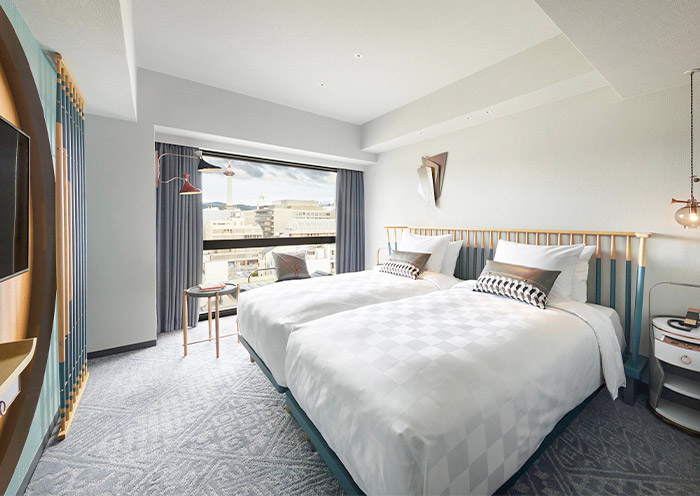
We offer a range of accommodation options to suit various preferences and budgets: luxurious 5-star hotels, comfortable 4-star hotels, and economical 3-star hotels. Our selected hotels are conveniently located close to the city center or popular tourist spots.
For those seeking a more distinctive lodging experience, we also offer Traditional Ryokans, Machiya, Onsen (hot springs) Hotels, etc. If you have specific needs or preferences, please consult with your travel advisor.
Tips: Be aware that hotel room sizes in Japan may be smaller compared to those in other developed countries due to the scarcity of land. If your budget allows, it is recommended to opt for a higher category of hotel, which will generally offer more comfort.
Photo Gallery for This Itinerary
Latest japan tours reviews from our customers.

Washington DC
Date of Experience: Aug 24, 2024
Tour Customized by: Rex
You May be Interested in This Tour: 7 Days Japan Kansai Tour with Hiroshima: Osaka, Kyoto, Uji & Nara

Date of Experience: Aug 06, 2024
Tour Customized by: Allan
You May be Interested in This Tour: 10 Days Japan Tour: New Golden Route with Hiroshima & Uji (Osaka to Tokyo)

Date of Experience: Jul 16, 2024
Tour Customized by: Rita
You May be Interested in This Tour: 8 Days Classic Japan Tour with Mt. Fuji - Tokyo, Hakone, Kyoto, Nara & Osaka
Price: request
(Based on a private tour for two people. Price varies depending on program, travel date, number of people.)
Free Enquiry! You don’t need to pay for the reservation.
Highly Recommended Tours in 2024
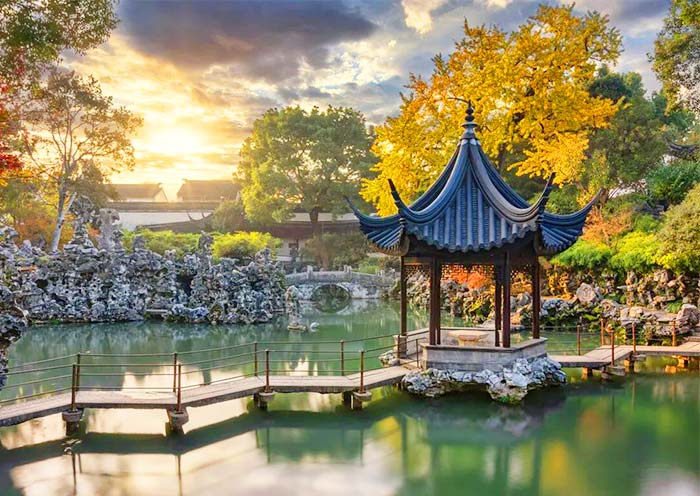
10 Days South Korea & Japan Highlights Tour
Seoul - Tokyo - Mount Fuji - Kyoto - Nara - Osaka


South Korea Tours & Trips
- Choose from 100+ South Korea tours
- 550+ verified reviews from TourRadar travelers
- 24/7 customer support
Table of contents
The best South Korea tour packages
What people love about south korea tours, travel south korea your way, top operators in south korea, best places to start your south korea tour, discover south korea tours for every budget.
- South Korea tours for every group
- Tours for every traveler
Best time to visit South Korea
Compiled by

Melissa South Korea travel expert at TourRadar
South Korea One Life Adventures - 13 Day Tour
“Loved every single day of your.” Fatemeh Zakeri Goorzangi, traveled in May 2024

- Gaze at the jaw dropping waterfall of Jeongbang waterfall
- Explore the grand palace of the Gyeongbokgung
- Explore Jeju island and take a stroll through the Olle Trail
12-Day South Korea Adventure: From Seoul to Jeju Island
“The itinerary was a 5star! South Korea is a beautiful and lovable place.” AVA ABONITE, traveled in August 2024
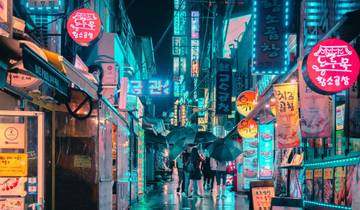
- In-depth Cultural
- Bhuddhist Temple Stay
- Gyeongbokgung Palace & Bukchon Hanok Village
- Korean Demilitarized Zone (DMZ) Tour
10-Day Premium South Korea Adventure: Culture, Cuisine, and Coastlines
“High energy with many different adventures; it was amazing.” Teresa Dennison, traveled in October 2023
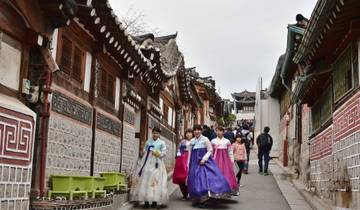
- Busan's Coastal Charms
- Jeju's Natural Splendors
Soulful South Korea
“Met some wonderful people on this trip. Jay, our local guide, went out of his way to ensure we had a wonderful time.” Susan, traveled in April 2023
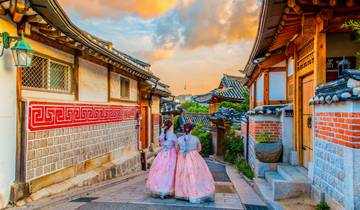
- Learn how to cook authentic South Korean dishes in Busan
- Go Hiking in Seoraksan National Park
- Explore the tunnels of the Demilitarized Zone near the North Korean border*

Discover Round Korea in 7days: A Wellness Holiday
“Wonderful tour and lots of memorable sights.” Daniel Kim, traveled in July 2024
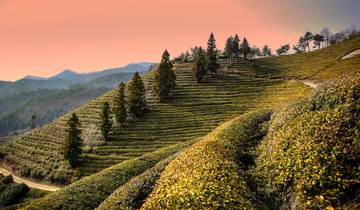
- Visiting Wellness spots recommended by KTO (Suncheonman, Spaland - Korean style Jjimjilbang)
- Experience-centered tour such as wearing Korean traditional clothes, having a conversation over tea with a Monk, and learning the Hanji making process.
- A hassle-free relaxed itinerary deviating from tightly packed schedules.
My South Korea tour was absolutely fantastic from start to finish. The whole trip was very varied, giving us the chance to get to know many different sides of the country. The tour itself was also very well organised. Our tour guide Damien was the best. With a lot of personal enthusiasm he gave us a lot of background information, showed us the best food spots and just generally introduced us to the exciting culture. I can't wait to return and can only recommend this trip to everyone!
My travel experience I must say was one of the best. The itinerary was a 5star! Our tour guide Juhyun made it so memorable and fun. She has the passion and enthusiasm in her job, always making the group happy, lively and satisfied at the end of the day. She's highly recommended! And our group (Trip16) was great too, we build an atmosphere of camaraderie and promised to be connected after our tour to the extent of wanting to plan a group tour again in the near future. We build a strong bond and gain more friends. And of course South Korea is a beautiful and lovable place. Definitely will come back again!
The 10-day trip to S. Korea was awesome. Very tiring, but a great trip. Had a great time. Our tour guide was amazing.
Fully Guided
Select from our extensive range of 103 fully guided tours to enjoy a worry-free experience through South Korea with our expert guides leading the way.
Find the perfect tour for your family, catering to all ages with over 103 family tours available in South Korea.
Choose from over 103 cultural tours and explore historical sites, local traditions and immerse yourself in the vibrant culture of South Korea.
An Explorer tour in South Korea promises thrilling adventures and diverse landscapes. South Korea's vast and varied terrain offers great opportunities for hiking, biking, and discovering off-the-beaten-path destinations, ensuring an exhilarating and unforgettable journey.
More travel styles:

"My South Korea tour was absolutely fantastic from start to finish. The whole trip was very varied, giving us the chance to get to know many different sides of the country. The tour itself was also very well organised. Our tour guide Damien was the best. With a lot of personal enthusiasm he gave us a lot of background information, showed us the best food spots and just generally introduced us to the exciting culture. I can't wait to return and can only recommend this trip to everyone!
One Life Adventures is an expert in:

"I highly recommend the Soulful South Korea trip. It was a busy trip but an excellent way to see a variety of cities and other areas of South Korea and to take part in a variety of activities - some perhaps once in a lifetime - all wonderfully organised by our Local Insider Yong. As someone who is not particularly fit I was initially concerned about the amount of activity involved in the trip but I found this to be manageable and Yong. who went above and beyond to support our group and also to give us as authentic an experience of Korea as possible, was able to be flexible regarding the activities when necessary. It was a brilliant introduction to a beautiful and interesting country, shared by a wonderful group of people
Culture Trip is an expert in:

"Michael, our tour guide, was patient, friendly, and flexible with different age travelers and physical abilities by adjusting the activities for them. The Best of Korea tour's itinerary was very full. I think many of us enjoyed the itinerary and the experiences we had. I, particularly, enjoyed the various transportation methods which added to the experience. The War Memorial Hall of Korea museum is a big museum and had very important history. Most of us needed more time. I think this activity could of come at the beginning of the tour for us to have better knowledge of Korean history. On the tour's last day, after the museum, most of us thought there was going to be a group dinner. The tours I have been in the past had end of the tour dinner to say good bye and show our appreciation to the tour guide. It's nice to have a closure after spending a week together. We were disappointed that the day just ended after returning to the hotel. After the DMZ visit, we had a very nice lunch at a well known restaurant. This time could of have been a good opportunity to say good bye but I think due to limited time, food came out late, we didn't linger.
G Adventures is an expert in:
Choose the city in South Korea you want your tour to start in:
Browse the best budget and luxury tours in South Korea that will take you through unmissable places like Seoul and Busan.
Starting from
South Korea tours for every type of group
Who are you traveling with?
Explore South Korea on a pre-planned itinerary and meet like-minded travelers
- Itineraries between 3 days and 17 days
- Starting from €76 per day
Small Group
Visit South Korea with fewer travelers, ensuring more immersive activities
- Itineraries between 5 days and 15 days
- Starting from €217 per day
Personalized
Customize your South Korea itinerary to match your interests and pace
- Starting from €40 per day
Visit South Korea with your own group or solo
South Korea tours for everyone
Discover unforgettable adventures designed for all ages! Whether you're young or young at heart, our adventures offer excitement and wonder for everyone.
- September 2024 66 tours
- October 2024 popular 81 tours
- November 2024 79 tours
- December 2024 popular 51 tours
- January 2025 37 tours
- February 2025 50 tours
- March 2025 popular 78 tours
- April 2025 78 tours
- May 2025 76 tours
- June 2025 popular 72 tours
- July 2025 63 tours
- August 2025 71 tours
Discover TourRadar
YOASOBI ASIA TOUR 2024-2025 LIVE IN KOREA YOASOBI
2024-12-07 ~ 2024-12-08

Change location (UK)
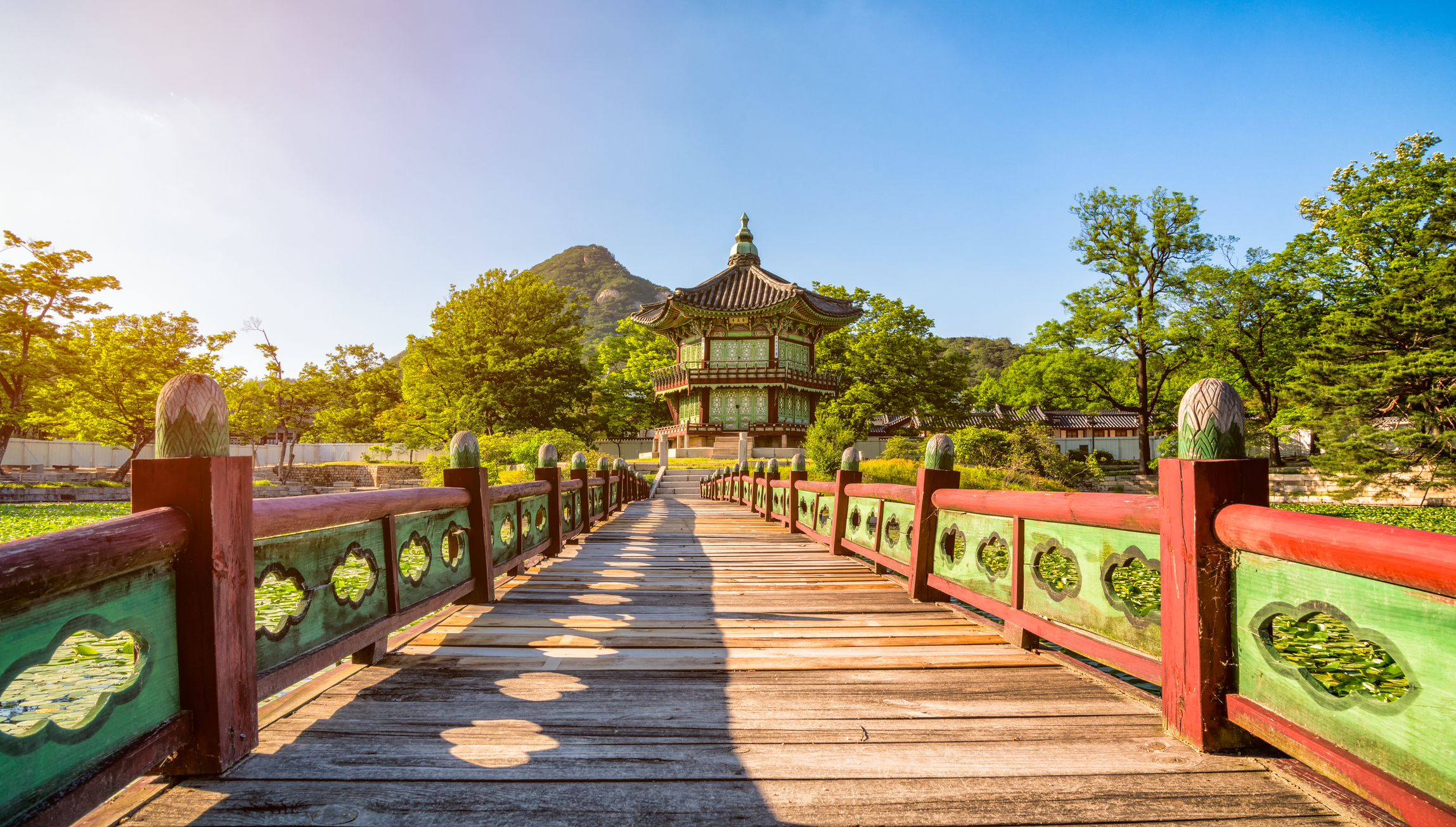
Holidays to South Korea
South korea somehow escaped the attention of international travellers for far too long, but the secret is now out – people are now coming from all over to see and enjoy this charming, quirky, super-friendly little slice of the far east..
Our holidays to South Korea offer a journey into the rarest of the rare: a country that’s packed to bursting with quirks, charm and cultural riches, but that still – for now – feels like something of a joyous secret.
Of course, with its K-pop megastars, Oscar-winning films, and a cuisine becoming more popular by the year, it’s only a matter of time before Hallyu, the so-called “Korean Wave”, sweeps the globe. And now could be the perfect opportunity to ride on its crest with our tailor-made South Korea holidays.
Spend some time travelling the peninsula and you’ll find that South Korea – or just plain “Korea”, to absolutely everyone here – is by turns ambitiously hi-tech and captivatingly traditional, densely populated while mostly mountainous and covered in pine trees. You know that old “land of contrasts” cliché? Well, this is one country where it really does pass muster.
While the cherry blossoms viewing spots, the hiking trails and the tantalising food that may draw you here, it’s the unprepared-for things – the intriguing folklore, 5,000 years' worth of palpable history , and the gregarious, garrulous locals that’ll really capture your heart during one of our South Korea holidays. Beyond the mainland's vibrant culture, natural beauty and breathtaking landscapes, your journey wouldn't be complete without a detour to experience the unique charm of South Korea's beloved gem; visit Jeju Island promising an unforgettable addition to your South Korean adventure. Don't just dream about the vibrant culture, breathtaking landscapes, and rich South Korea history; make it a reality. Embark on an unforgettable journey where every moment is a discovery. Discover South Korea's top destinations and magic peninsula firsthand with our expertly designed holidays to South Korea.
Our favourite routes
South Korea itineraries featuring the places and experiences we love most
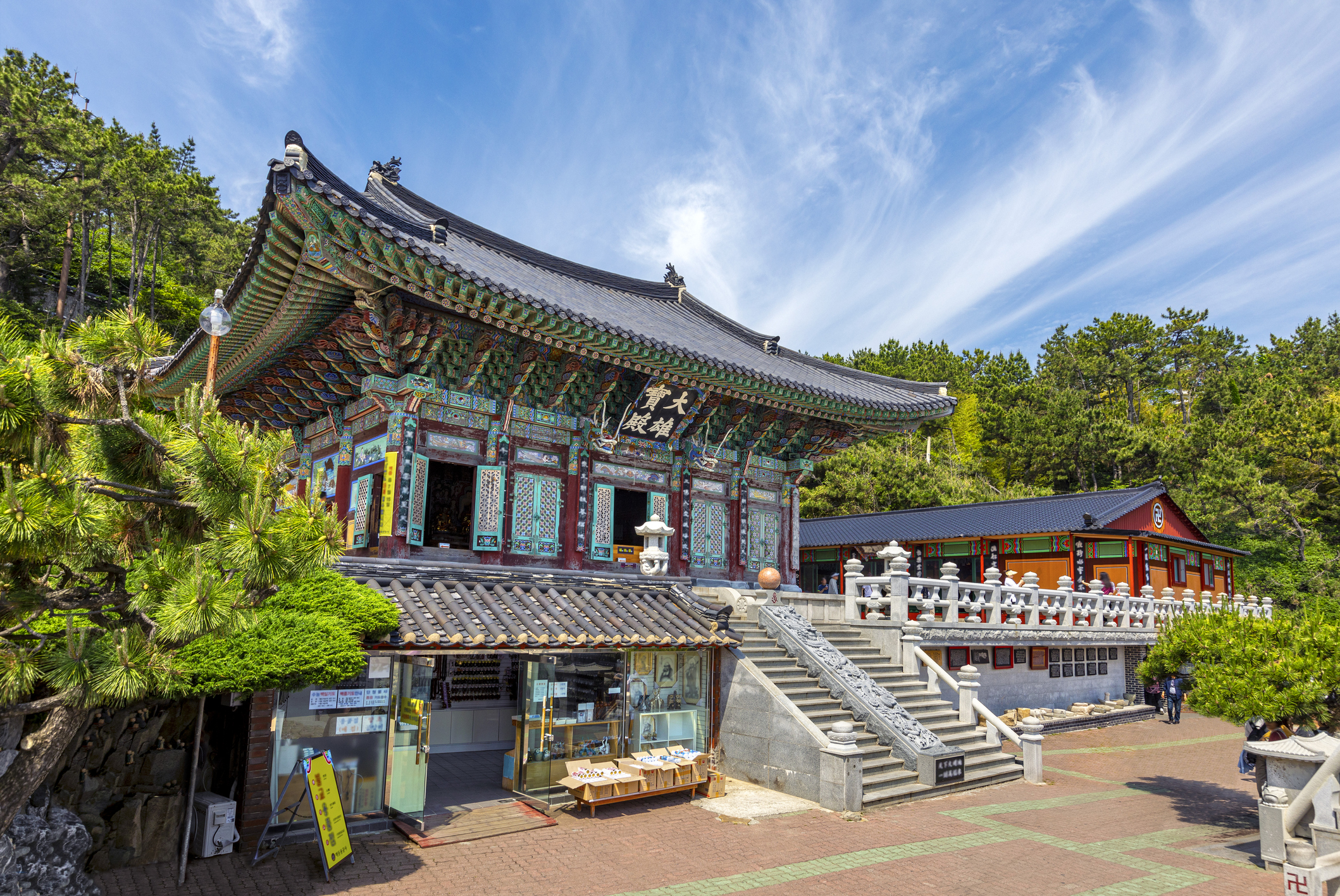
Best of South Korea
South Korea might not look big on a map, but over the course of almost two weeks, this trip will show you that its size doesn’t matter at all – there’s so much to see, and you’ll be hitting all the top spots.
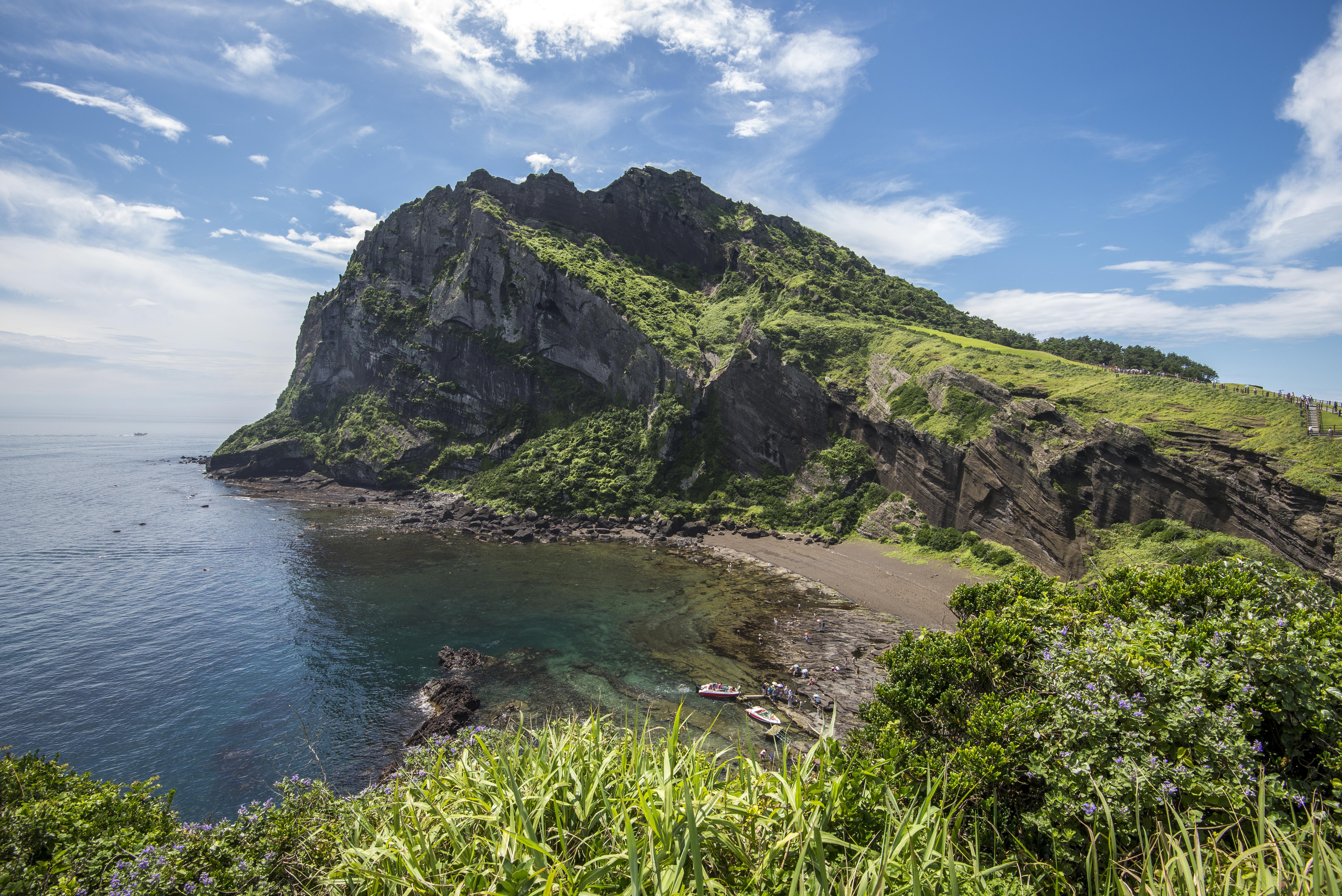
Jeju Island Extension
Whatever you’ve seen during your stay in Korea, a side-trip to Jeju Island will be the cherry on top. Koreans absolutely love the place (if you want proof, Seoul-to-Jeju is the world’s busiest flight route) – and you probably will too.
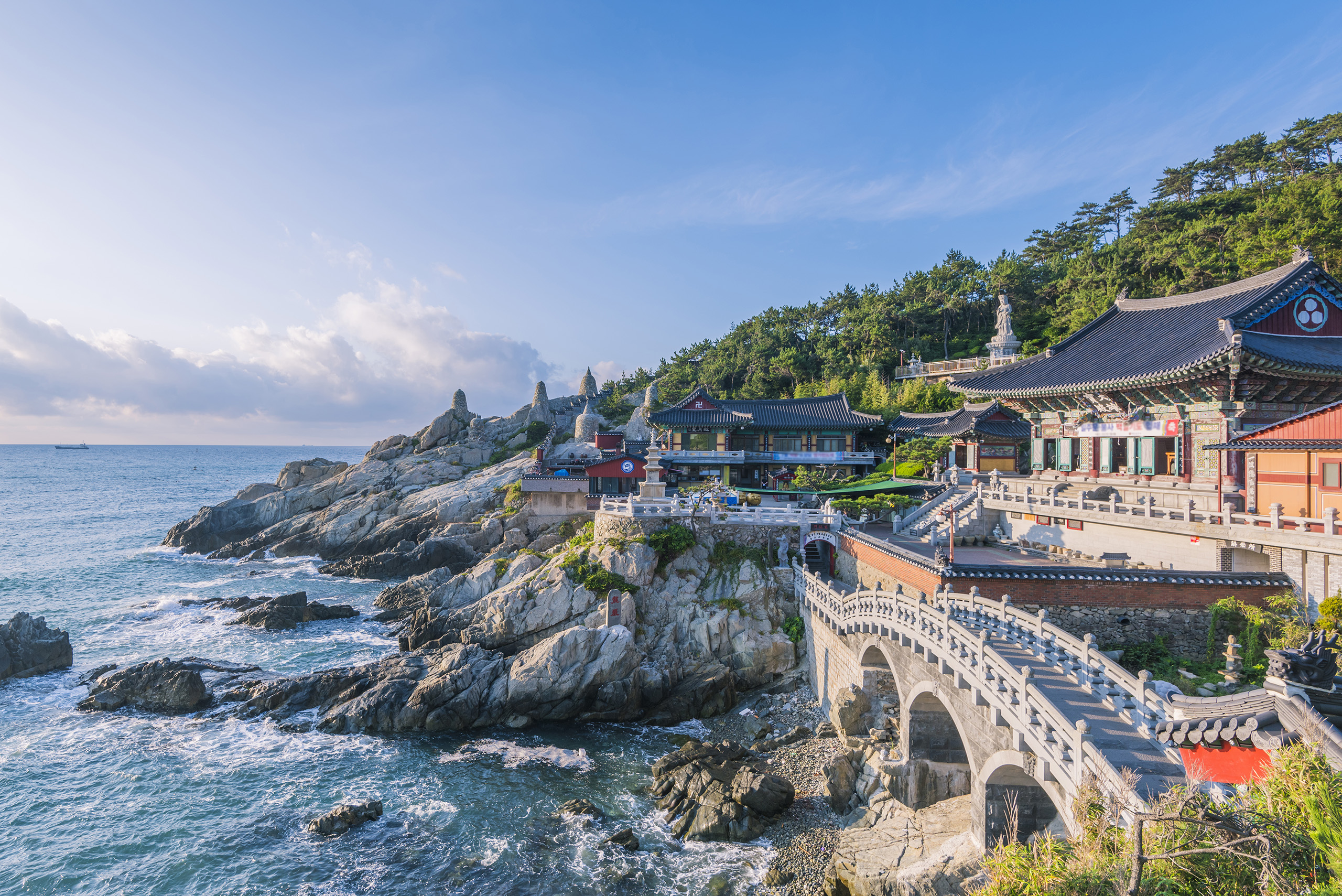
South Korea Highlights
If you’d like a trip that’s low on intensity but high on interest, this one’s for you – focusing on three contrasting destinations, it keeps travel time to a minimum. Though you’ll be taken to all the best sights, you’ll also have plenty of time in each place to simply do your own thing.
Our favourite guided tours and excursions
Whatever draws you to South Korea, we can hook you up with insider experiences to get you right to the heart of the culture. From foodie explorations of Seoul to K-pop dance classes, traditional hanok guesthouse stays and nerve-jangling tours of the infamous DMZ, each of our excursions are tried, tested, and approved by us – not to mention led by some of the most passionate and knowledgeable people around.
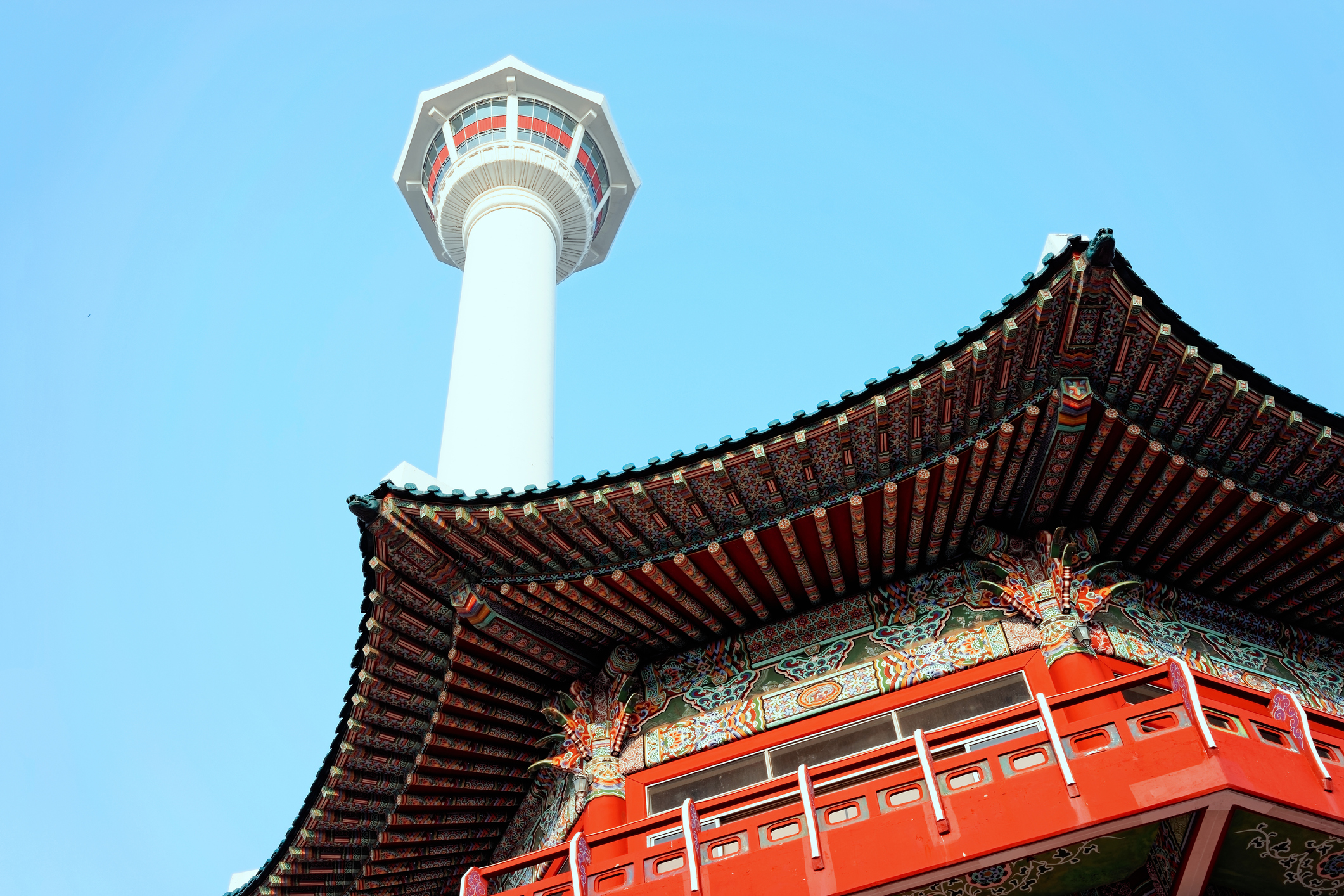
Why book with InsideAsia?
You know what you want, and your personal Travel Consultant knows how to make it happen - it's a match made in heaven
From your first call until you arrive home, we’re there whenever you want us — and never when you don’t.
88% of our customers rate our service as "excellent" — and that’s what we always strive to be.
Which is why all our trips are carbon-negative and bring real benefits to communities across Asia.
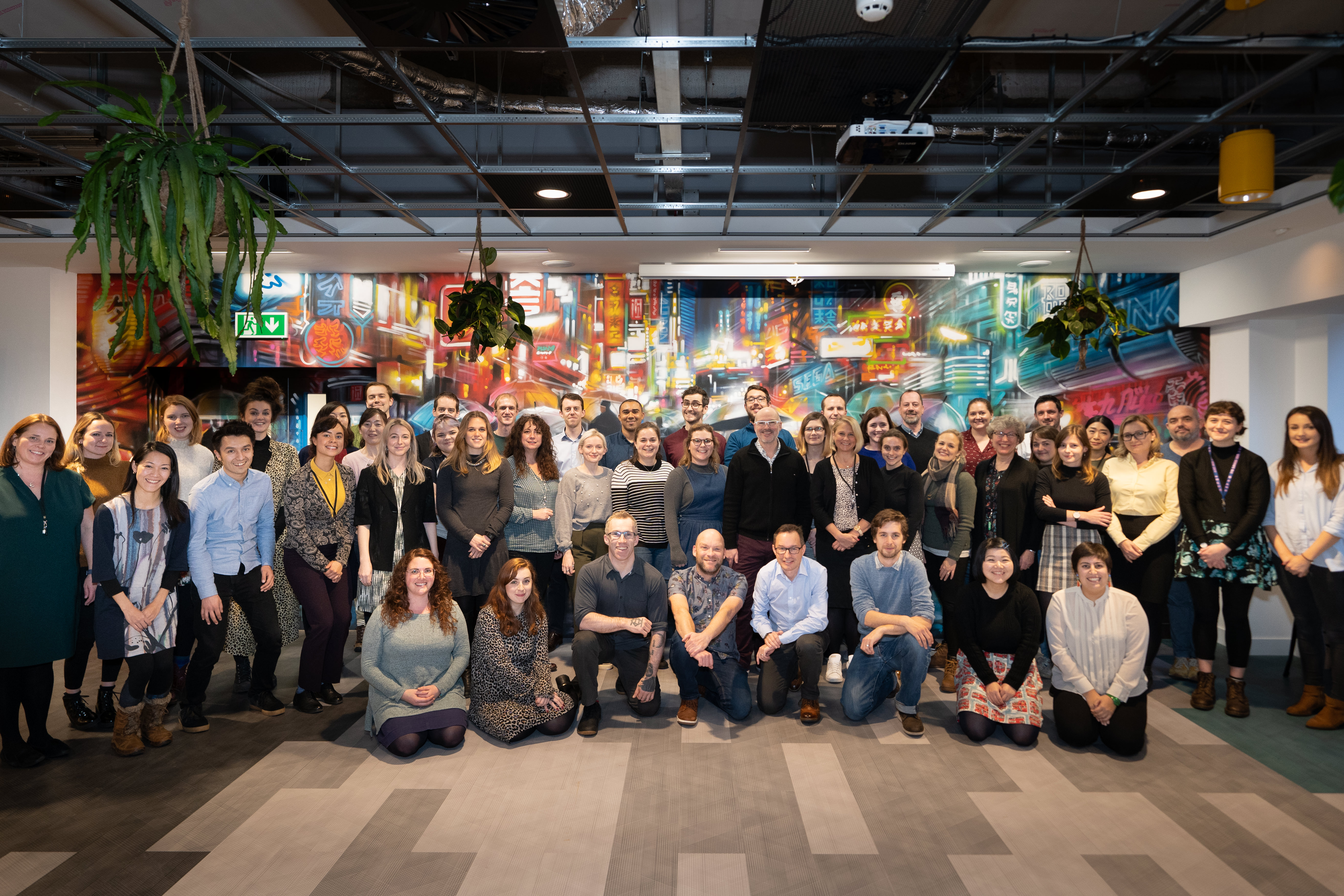
Ready to plan?
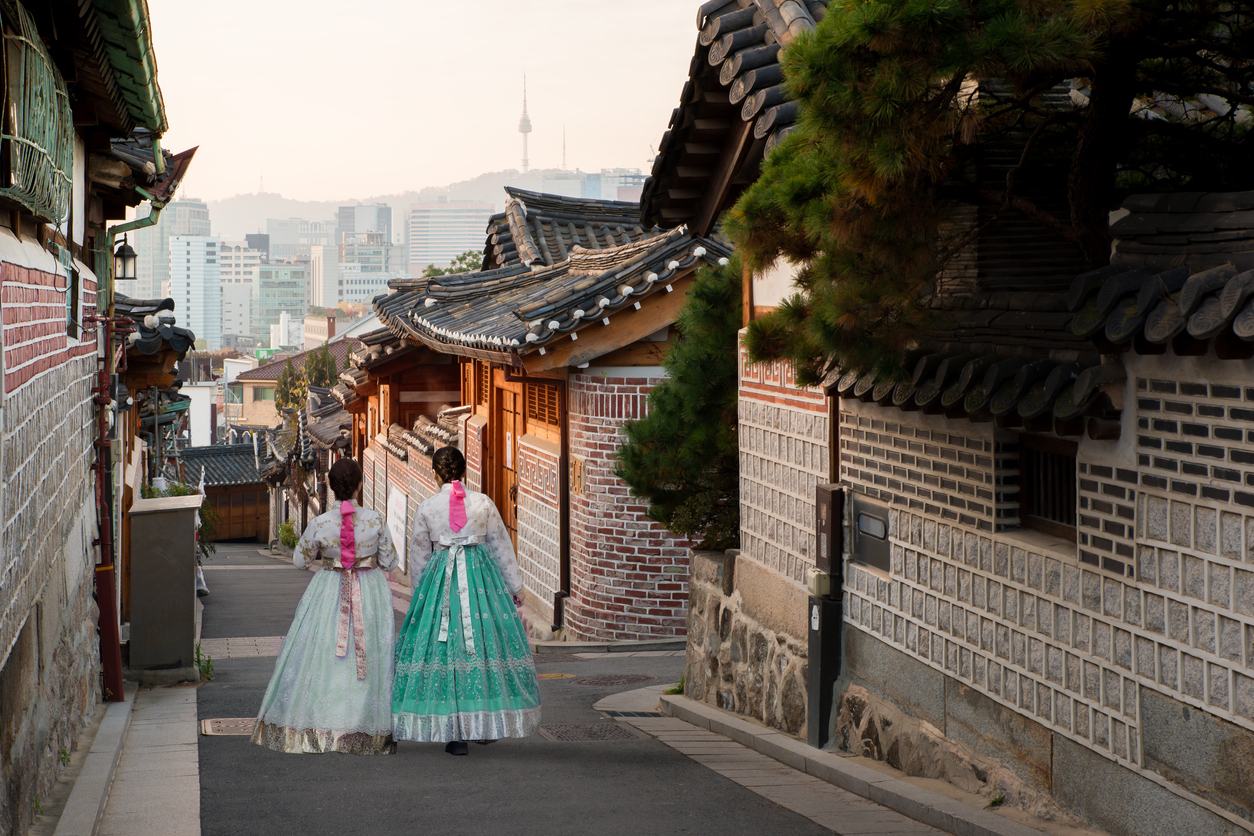
10 Reasons to go to South Korea
The People. Koreans are a joy — and they will get involved in your trip; we suggest you let them Koreans are amongst the friendliest and most open people in Asia.

Best time to visit South Korea
Seasons and weather in South Korea Travel to South Korea is possible all year round, but each season is quite dramatically distinct - a characteristic it shares with Japan.

South Korean food: everything you need to know
Fifteen years ago, there weren’t many people on this side of the globe who’d tried South Korean food.
Kim Jong Un urges expansion of North Korea's nuclear arsenal during facility tour
by ASSOCIATED PRESS

SEOUL, South Korea (AP) — North Korea offered a rare glimpse into a secretive facility to produce weapons-grade uranium as state media reported Friday that leader Kim Jong Un visited the area and called for stronger efforts to “exponentially” increase the number of his nuclear weapons.
It’s unclear if the site is at the North's main Yongbyon nuclear complex, but it's the North's first public disclosure of a uranium-enrichment facility since it showed one at Yongbyon to visiting American scholars in 2010. While the latest unveiling is likely an attempt to apply more pressure on the U.S. and its allies, the images North Korea's media released of the area could provide outsiders with a valuable source of information for estimating the amount of nuclear ingredients that North Korea has produced.
During a visit to the Nuclear Weapons Institute and the production base of weapon-grade nuclear materials, Kim expressed “great satisfaction repeatedly over the wonderful technical force of the nuclear power field” held by North Korea, the official Korean Central News Agency reported.
KCNA said that Kim went around the control room of the uranium enrichment base and a construction site that would expand its capacity for producing nuclear weapons. North Korean state media photos showed Kim being briefed by scientists while walking along long lines of tall gray tubes, but KCNA didn’t say when Kim visited the facilities and where they are located.
KCNA said Kim stressed the need to further augment the number of centrifuges to “exponentially increase the nuclear weapons for self-defense,” a goal he has repeatedly stated in recent years. It said Kim ordered officials to push forward the introduction of a new-type centrifuge, which has reached its completion stage.
Kim said North Korea needs greater defense and preemptive attack capabilities because “anti-(North Korea) nuclear threats perpetrated by the U.S. imperialists-led vassal forces have become more undisguised and crossed the red-line,” KCNA said.
North Korea first showed a uranium enrichment site in Yongbyon to the outside world in November 2010, when it allowed a visiting delegation of Stanford University scholars led by nuclear physicist, Siegfried Hecker, to tour its centrifuges. North Korean officials then reportedly told Hecker that 2,000 centrifuges were already installed and running at Yongbyon.
Satellite images in recent years have indicated North Korea was expanding a uranium enrichment plant at its Yongbyon nuclear complex. Nuclear weapons can be built using either highly enriched uranium or plutonium, and North Korea has facilities to produce both at Yongbyon. It’s not clear exactly how much weapons-grade plutonium or highly enriched uranium has been produced at Yongbyon and where North Korea stores it.
“For analysts outside the country, the released images will provide a valuable source of information for rectifying our assumptions about how much material North Korea may have amassed to date,” said Ankit Panda, an expert with the Carnegie Endowment for International Peace.
“Overall, we should not assume that North Korea will be as constrained as it once was by fissile material limitations. This is especially true for highly enriched uranium, where North Korea is significantly less constrained in its ability to scale up than it is with plutonium,” Panda said.
In 2018, Hecker and Stanford University scholars estimated North Korea's highly enriched uranium inventory was 250 to 500 kilograms (550 to 1,100 pounds), sufficient for 25 to 30 nuclear devices.
Some U.S. and South Korean experts speculate North Korea is covertly running at least one other uranium-enrichment plant. In 2018, a top South Korean official told parliament that North Korea was estimated to have already manufactured up to 60 nuclear weapons. Estimates on how many nuclear bombs North Korea can add every year vary, ranging from six to as much as 18.
Since 2022, North Korea has sharply ramped up weapons testing activities to expand and modernize its arsenal of nuclear missiles targeting the U.S. and South Korea. Analysts say North Korea could perform nuclear test explosions or long-range missile tests ahead of the U.S. presidential election in November with the intent to influence the outcome and increase its leverage in future dealings with the Americans.
North Korea had conducted test-launches of multiple short-range ballistic missiles on Thursday. In an apparent reference to those launches, KCNA said Kim had supervised test-firing of nuclear-capable 600mm multiple rockets to examine the performance of their new launch vehicles.
MLB's travel plans for '24: Seoul, Mexico City, London, D.R.

David Adler
The MLB World Tour is coming to four international destinations in 2024: London, Mexico City, Seoul and Santo Domingo.
The Seoul Series will be the opener of the 2024 MLB regular season -- and will mark the first MLB regular-season games ever played in Korea.
Major League Baseball and the MLB Players Association announced the full plans for the four series on Wednesday.
• Seoul Series: Dodgers vs. Padres, March 20-21 (MLB season opener) • Mexico City Series: Astros vs. Rockies, April 27-28 • London Series: Mets vs. Phillies, June 8-9 • Dominican Republic Series: Red Sox vs. Rays, March 9-10 (Spring Training)
• MLB international
"Major League Baseball is incredibly excited for this extensive slate of international games in 2024," Commissioner Rob Manfred said. "Our recent efforts have produced strong enthusiasm around the globe, and we look forward to building on that foundation with returns to Mexico City and London, while also opening the season in Korea for the first time. In addition, we can’t wait to celebrate the tradition of the sport in the Dominican Republic with our visit to Santo Domingo next March. We are thrilled that our fans across four different countries outside the United States and Canada will have the opportunity to see the game’s stars."
The MLB World Tour schedule for next year includes the return of games to the United Kingdom and Mexico for a second consecutive season, after the 2023 London Series between the Cubs and Cardinals and Mexico City Series between the Giants and Padres, in addition to new stops in Korea and the Dominican Republic.
“Players have a deep interest in growing baseball around the world. No matter where they come from, players are linked by a passion for our game that transcends different languages, cultures, and nationalities,” said Tony Clark, the executive director of the MLB Players Association. “The series announced today will allow fans around the globe to gain a first-hand appreciation for the unmatched skill and infectious enthusiasm players display every time they go to work. We are excited to expand our international presence in new communities and celebrate the game we all love.”
Here's a look at each of the four international series in 2024.
Seoul Series
The Dodgers and Padres will open up the 2024 season with two games in Korea from March 20-21.
The Seoul Series will mark the ninth time that the MLB season has opened outside the 50 U.S. states and Canada, and the first time in five years. Previous international openers include:
• 1999 -- Monterrey, Mexico (Rockies vs. Padres) • 2000 -- Tokyo, Japan (Mets vs. Cubs) • 2001 -- San Juan, Puerto Rico (Rangers vs. Blue Jays) • 2004 -- Tokyo, Japan (Rays vs. Yankees) • 2008 -- Tokyo, Japan (Red Sox vs. A's) • 2012 -- Tokyo, Japan (A's vs. Mariners) • 2014 -- Sydney, Australia (Dodgers vs. D-backs) • 2019 -- Tokyo, Japan (A's vs. Mariners)
It will be the Dodgers' first international games since they played the Padres in Mexico in 2018, and their second Opening Day abroad after the 2014 season opener in Australia.
"The Dodgers have a long and proud history of helping to grow the game abroad, highlighted by our trips to Mexico, China and Australia. It's very exciting to add Korea to the list," Dodgers president Stan Kasten said. "I know our players are thrilled to put their talents on display in a country so rich with baseball tradition and talent, including former Dodgers Chan Ho Park, Hee-Seop Choi and Hyun Jin Ryu."
The Padres will be playing internationally for a second straight season, but in a new country, going from the 2023 Mexico City Series to the 2024 Seoul Series. Like the Dodgers, they've also played abroad on Opening Day before, in the inaugural international season opener back in 1999.
"Korea is a great baseball country with a rich tradition, passionate fans, and talented players, including current Padre and San Diego fan favorite Ha-Seong Kim," Padres CEO Erik Greupner said. "The Padres are proud to serve alongside the Dodgers as global ambassadors for the game of baseball with our historic 2024 Korea Series."
Mexico City Series
The second Mexico City Series will feature the Astros and Rockies for a pair of games on April 27 and 28, almost exactly a year after this season's inaugural Mexico City Series.
Both Houston and Colorado last played internationally in Mexico, but in Monterrey, not Mexico City. The Astros played two regular-season games against the Angels there in 2019, and the Rockies played an exhibition series against the D-backs that same year.
The Astros have played exhibition games in Mexico City before, in 2016 against the Padres and 2004 against the Marlins.
• 2023 Mexico City Series

Sign up to receive our daily Morning Lineup to stay in the know about the latest trending topics around Major League Baseball.
London Series
The London Series returns for its third edition overall, with the Mets and Phillies facing off at London Stadium on June 8 and 9.
The Mets will be playing abroad for the first time since 2010, when they faced the Marlins in Puerto Rico. But they're no stranger to international games, having participated in both MLB's first-ever international regular season games in 1996 in Mexico and MLB's first-ever regular-season games in Japan in 2000.
• 2024 London Series will feature NL East rivalry in Mets-Phils
"Interest in baseball is growing all over the world, and to bring the Mets' 'never-say-die' attitude to sports fans in London is a tremendous honor," Mets owner Steve Cohen said. "Our Queens family is ready to show London a great time with exciting baseball and amazing experiences that create new fans and build the Mets community throughout the United Kingdom."
The Phillies have never played regular-season games internationally, and have left the U.S. and Canada only once, over 50 years ago, for a pair of exhibition games against the Pirates in San Juan in 1977.
"Major League Baseball has done an excellent job of expanding its footprint internationally, and we are honored to play a role in that effort as part of the 2024 London Series," Phillies managing partner John Middleton said. "This will be a wonderful opportunity to showcase our players' talents and highlight the excitement that comes with a Phillies-Mets matchup for our fans in the UK and for those who have never attended a baseball game."
Dominican Republic Series
In addition to the three international regular-season series planned for in 2024, the Red Sox and Rays will play a Spring Training series in Santo Domingo at Estadio Quisqueya from March 9-10.
"This unique opportunity builds on our long-standing connection to the Dominican Republic and allows us to celebrate the remarkable talents and rich cultural heritage of a country whose passion for the game has distinctly shaped our organization," Red Sox president Sam Kennedy said. "From the players who have passed through our Dominican Republic Academy to those who have helped us win championships, we have been fortunate to witness the profound impact of Dominican players within our game, and we are thrilled to be able to bring Red Sox baseball to such a vibrant baseball community next year."
Exhibition games are also a key part of the MLB World Tour, which includes up to 16 exhibition games being played internationally between 2023 and ‘26, as well as up to 24 regular-season games spanning Asia, Europe and Latin America.

- GROUP TOURS
- FREE & EASY
- --> INSURANCE --> -->